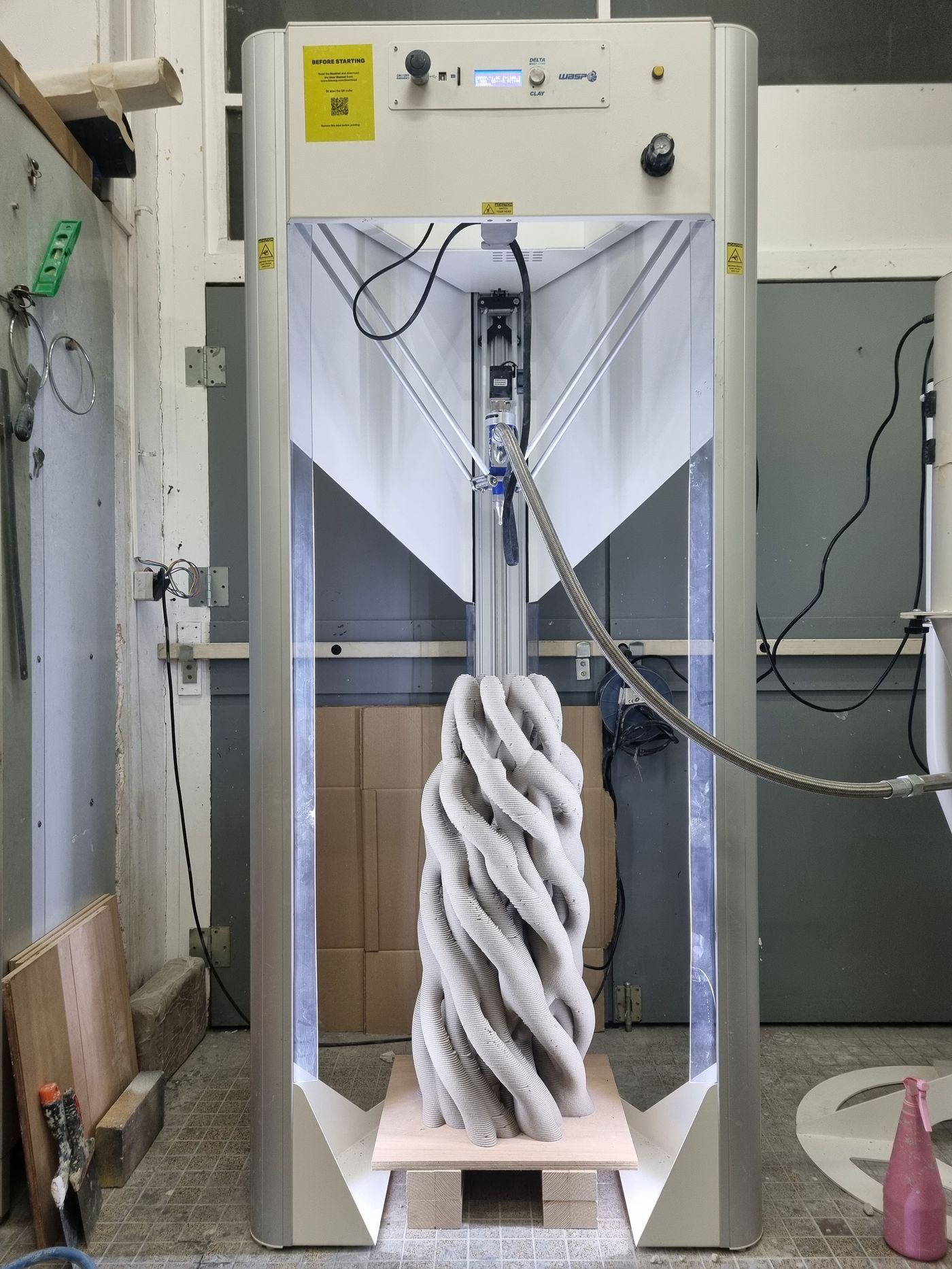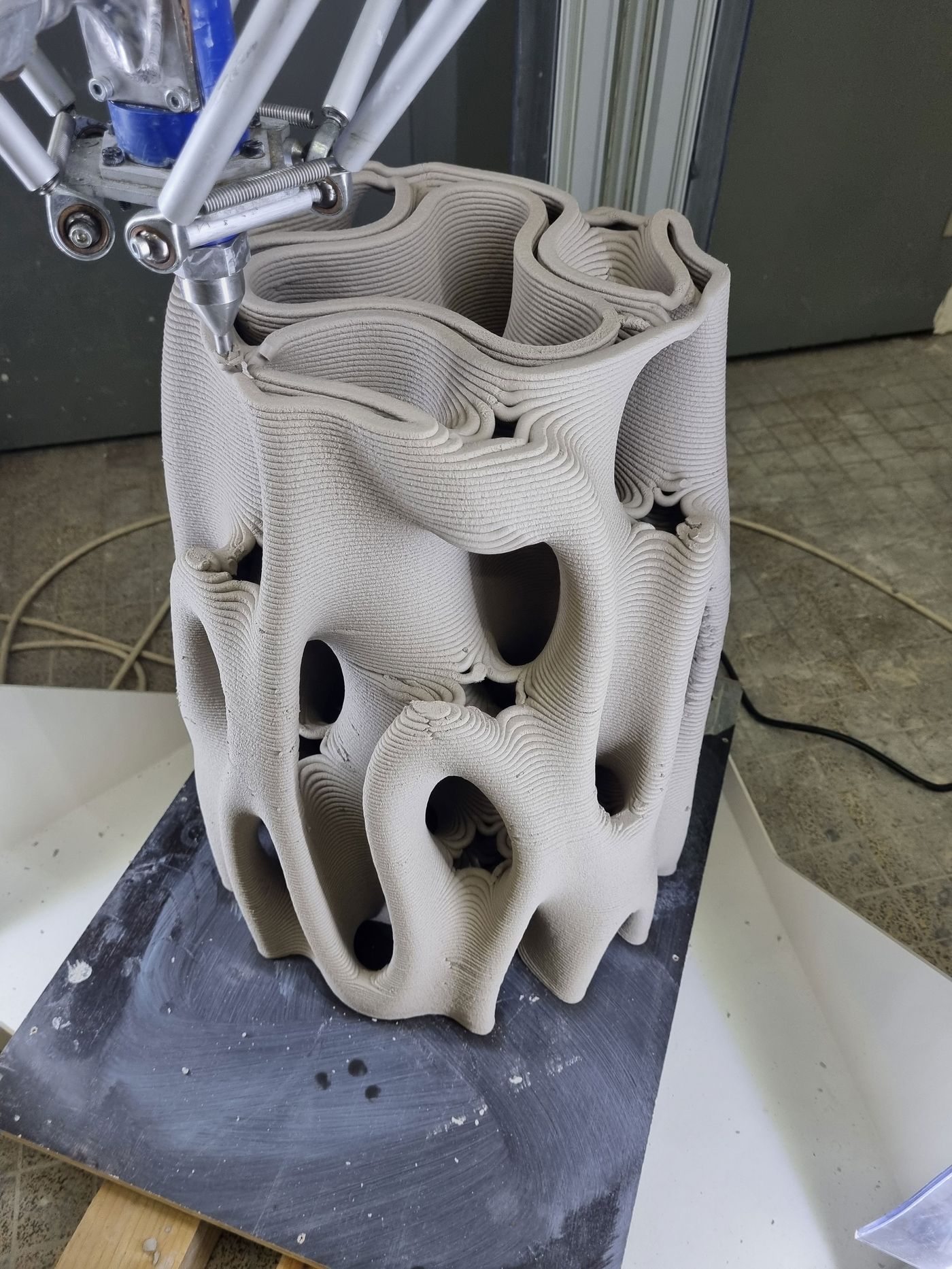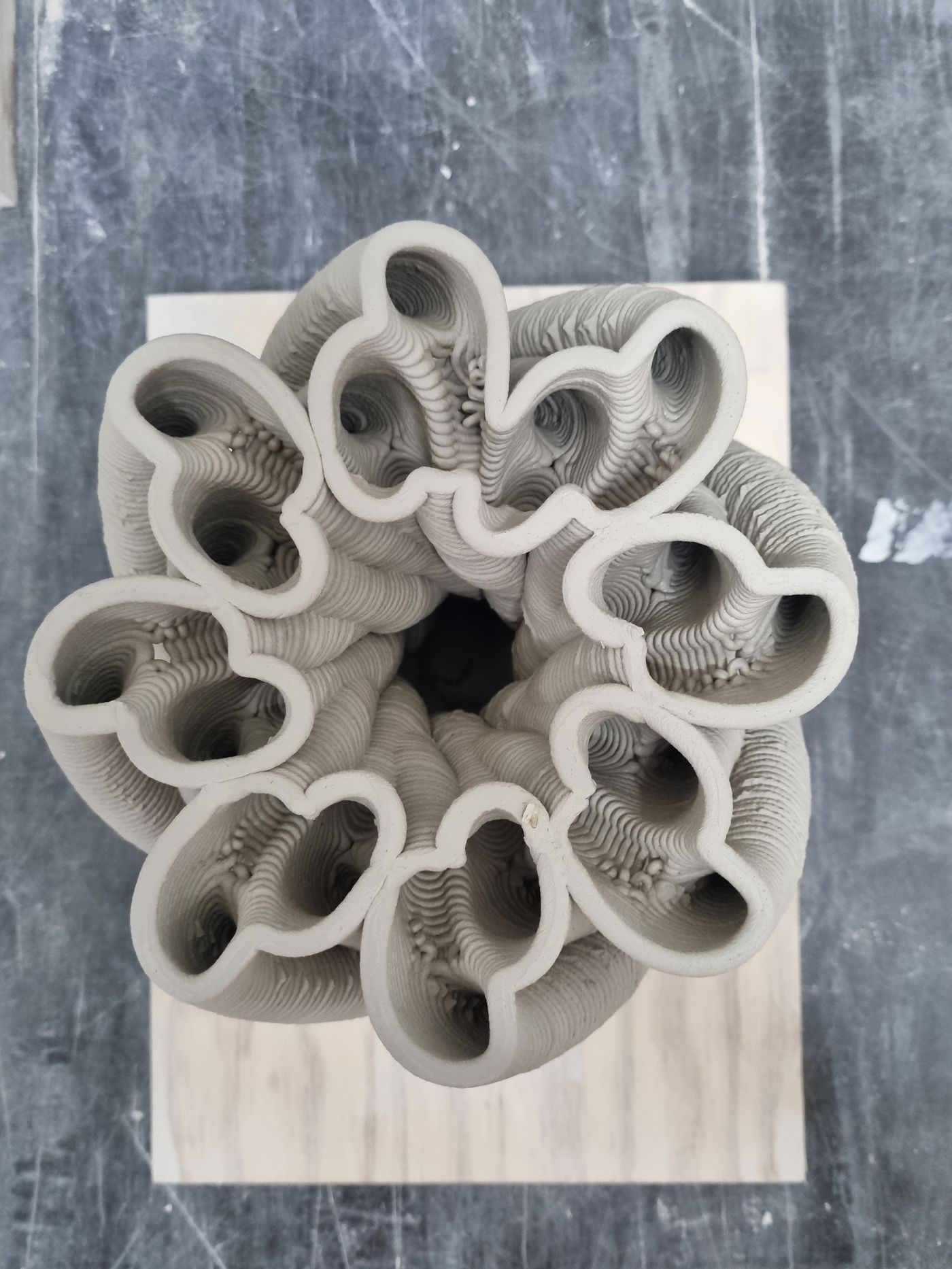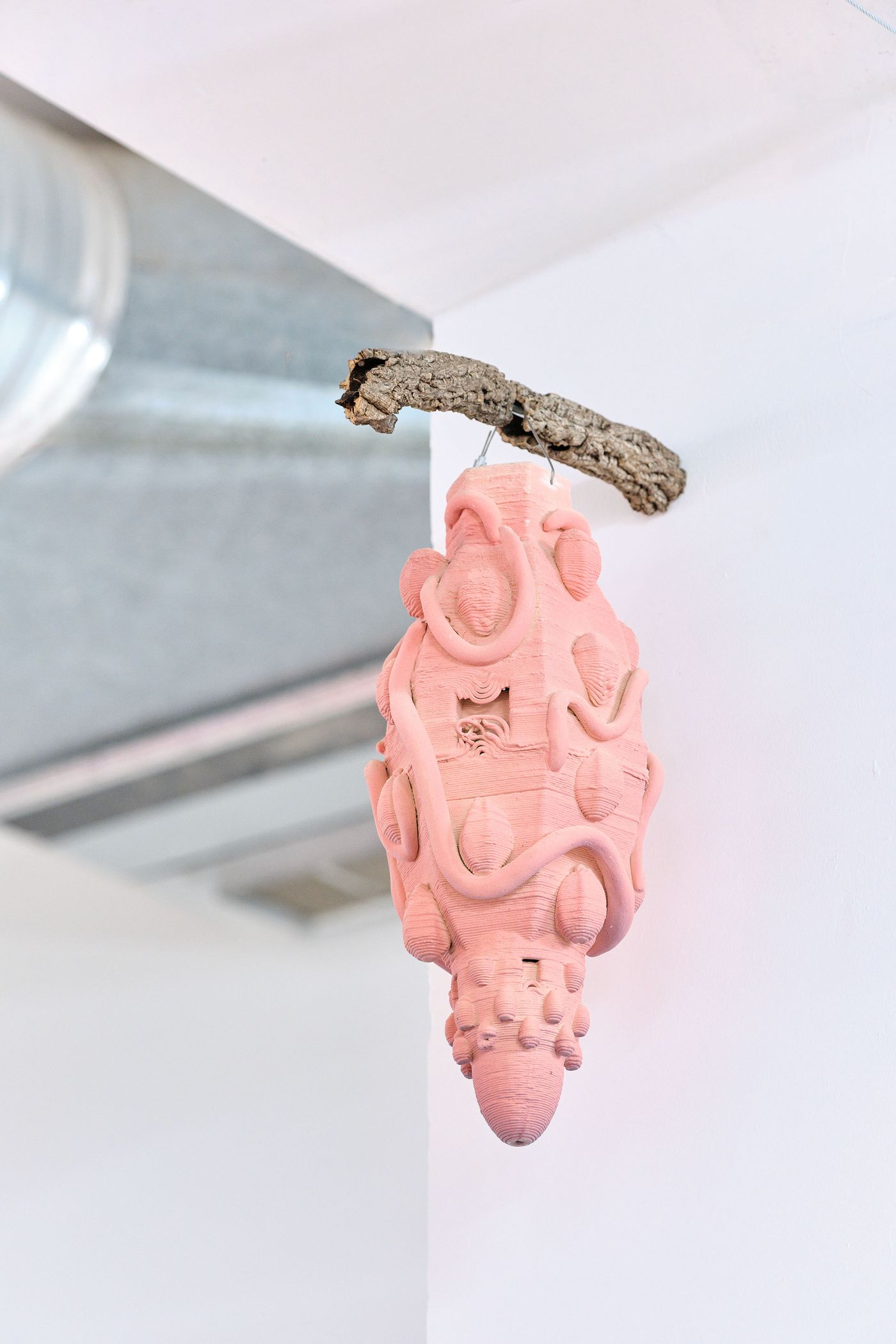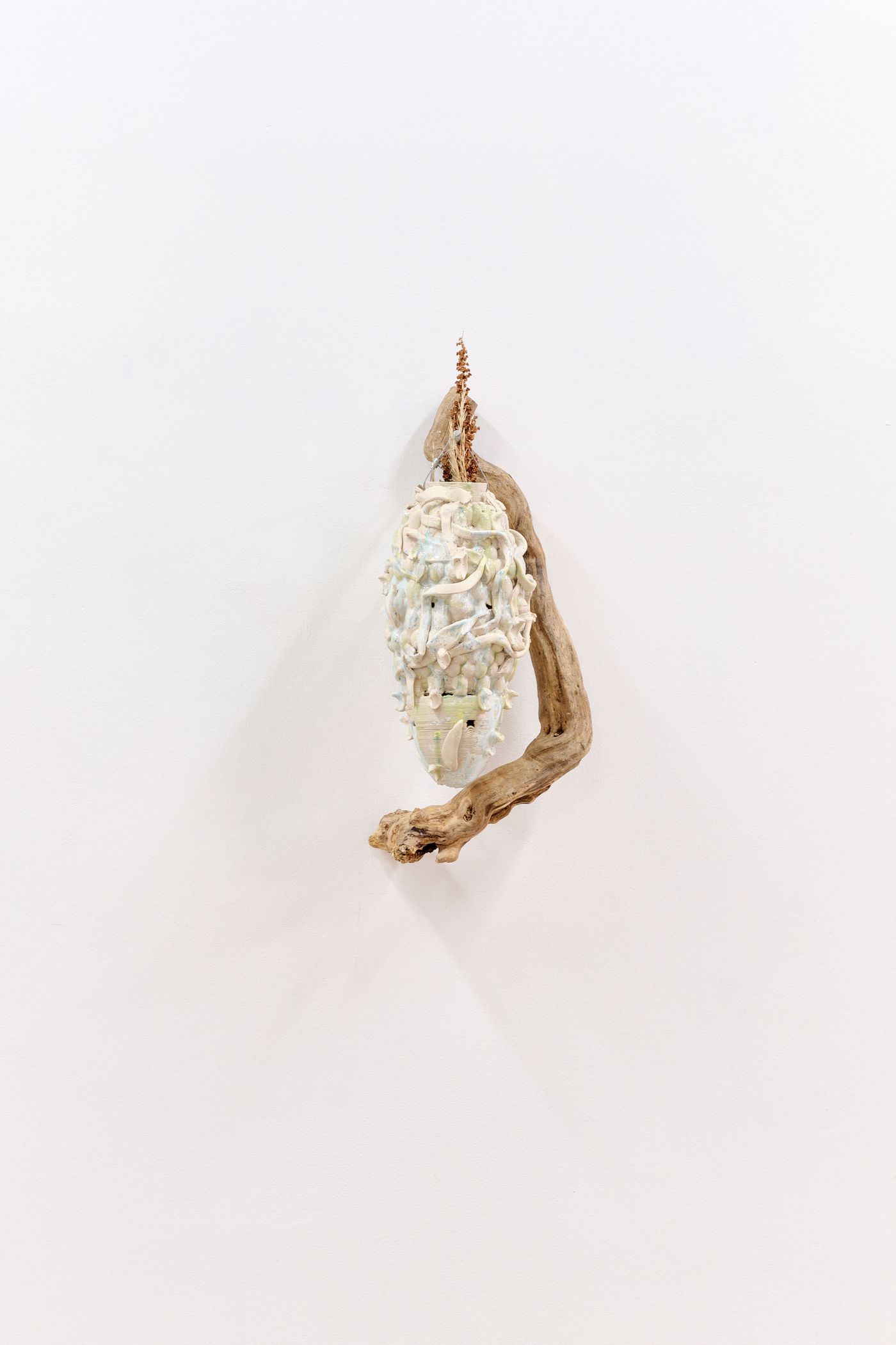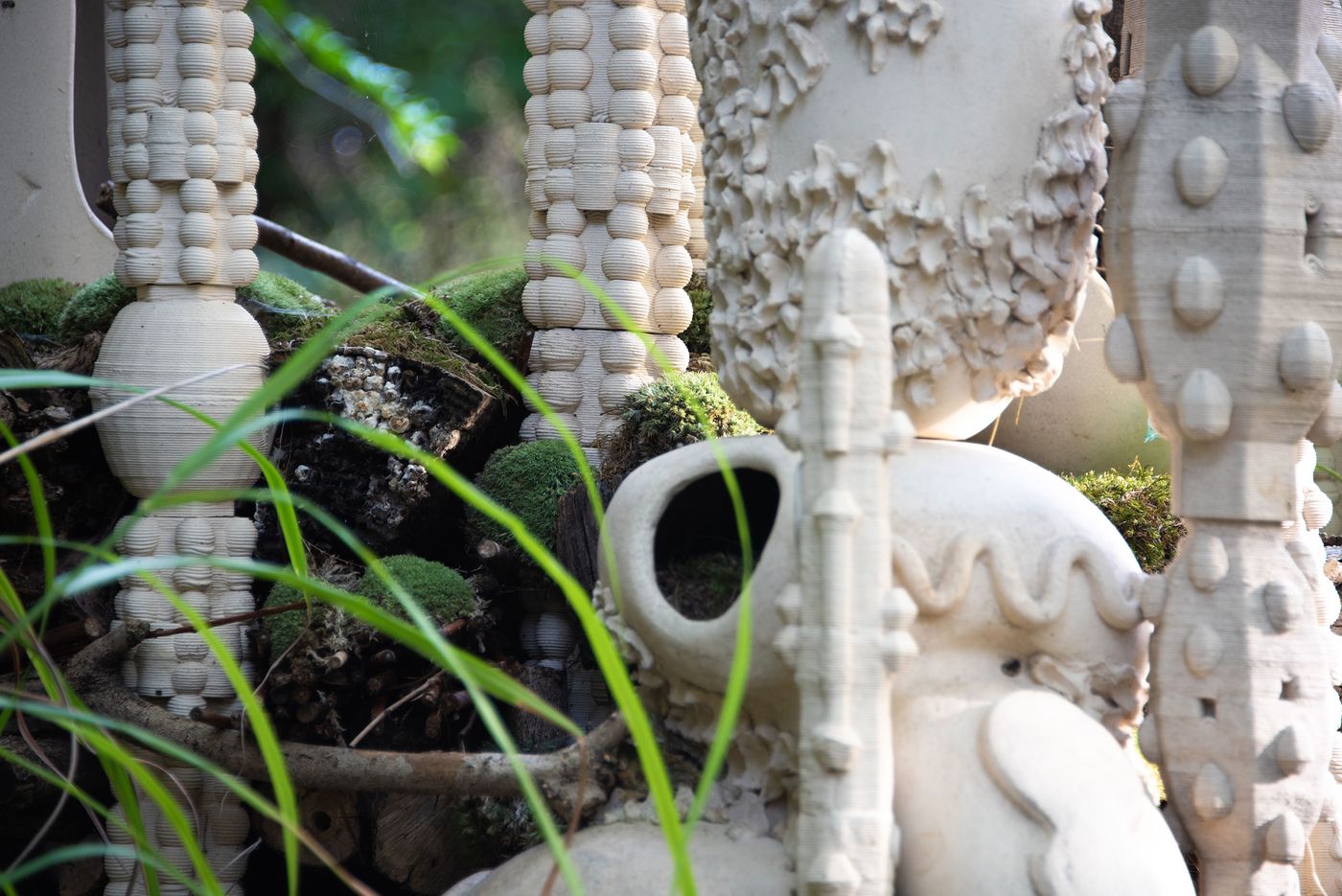
Crafting Habitats: Raphaël Emine on Ceramics, Ecology, and Interspecies Collaboration
Words by Eric David
Location
Crafting Habitats: Raphaël Emine on Ceramics, Ecology, and Interspecies Collaboration
Words by Eric David
There are numerous ceramic artists who create complex, intricately constructed sculptures that elicit awe and admiration when seen up close. French artist Raphaël Emine is one of them, but what sets him apart is that the complexity of his work extends far beyond what the eye can see. Hidden within his biomorphic creations are elaborate tunnels, lattices and chambers designed to host insects and other living organisms.
Inspired by botany, entomology, mathematics, human architecture and biogenic structures like beehives and termite mounds, his “eco-restorative sculptures” are not only informed by the natural world but actively engage with it. From duckweed- and cyanobacteria-stained wall pieces (Stoups) to colourful hanging cocoons (Nests) and baroque-inflected constructions (Les Utopies Entomologiques) conceived as interspecies habitats, Emine proposes ceramics as vessels for ecological agency. His unconventional ethos is matched by an experimental process that merges traditional clay modelling with digital technologies such as 3D printing.
Less concerned with aesthetics or utility than with creating the conditions for life to unfold, Emine subtly reframes ceramics not merely as an art form, but as a medium for reimagining how we inhabit—and co-inhabit—the world. Yatzer recently caught up with the artist to talk not only about his practice, but his fascination with clay and the porous boundaries between making and living.
(Answers translated from French by Wendy Gao.)
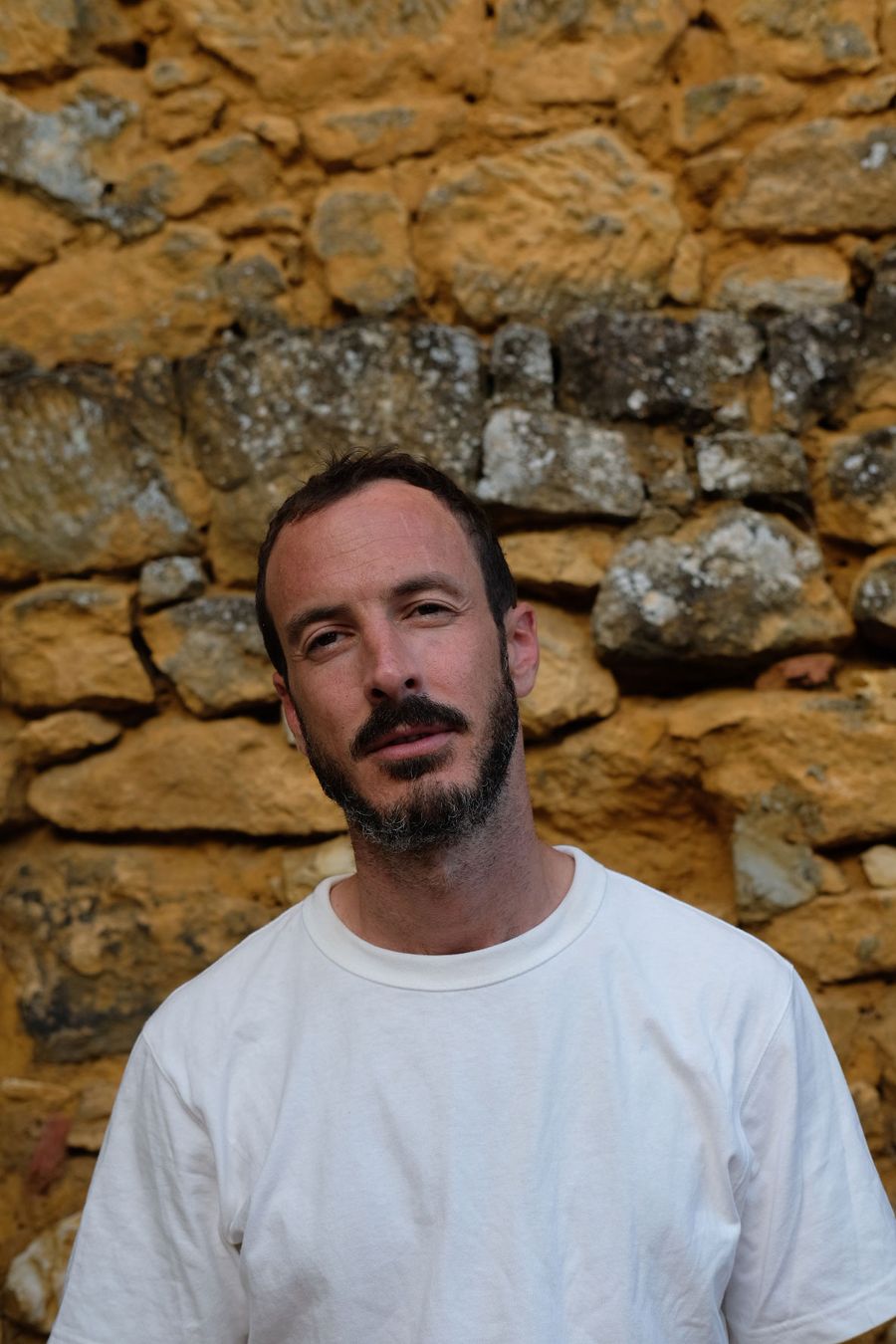
Artist's portrait.
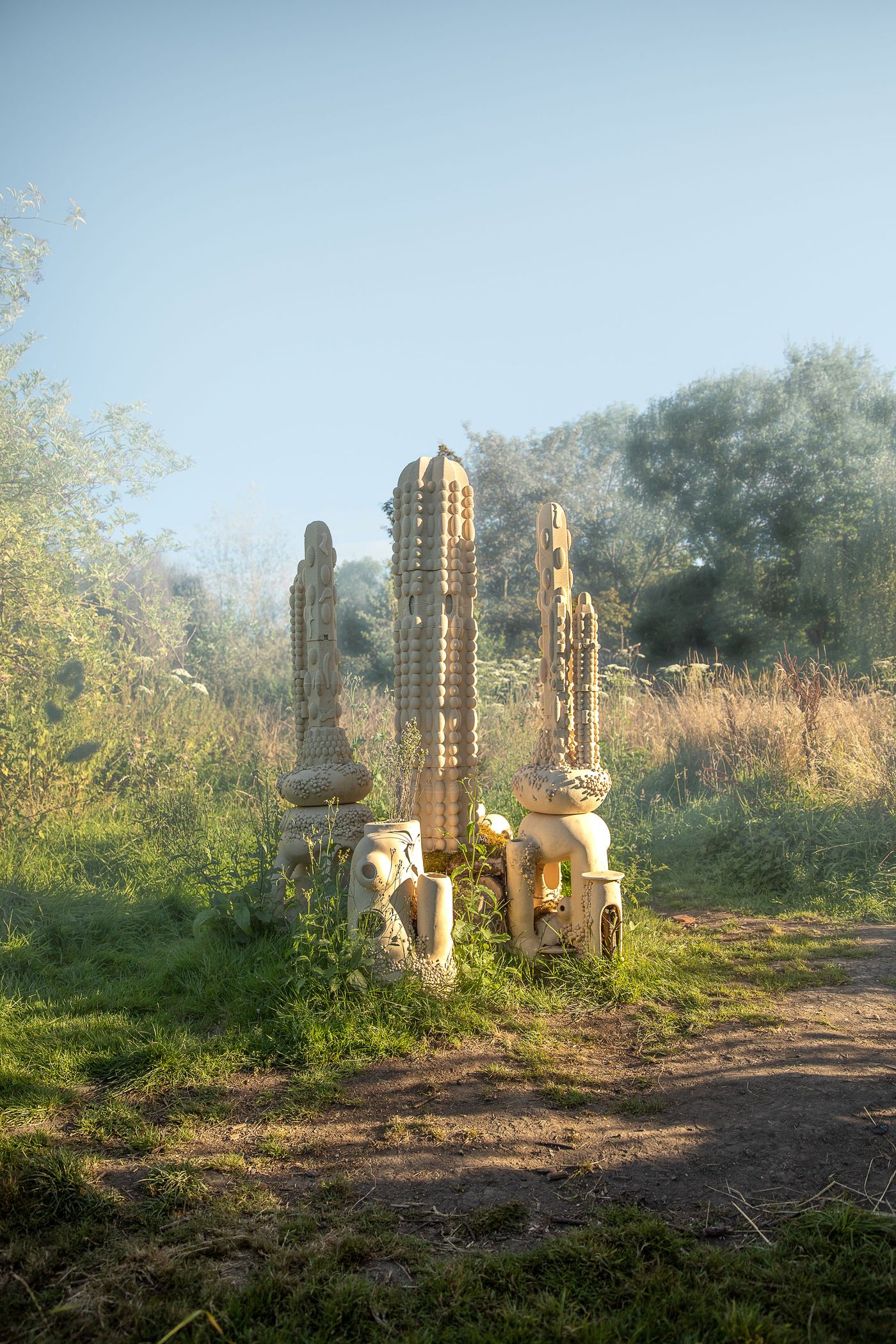
Utopies Entomologiques #2, 2024. Festival international d’art et de jardins, Les hortillonnages, Amiens, 2024 Photography © Yann Monel.

(Left to the right) Nest #8, Nest #9, Nest #10, 2024. Exhibition view: ARCADIA, Bally Foundation, Lugano, 2014. Photography by Andrea Rossetti.
What drew you to ceramics? Was there a specific moment or influence that made you realise this was a medium that you wanted to express yourself through?
I initially began working with ceramics as a self-taught artist, developing my visual language and technical approach through a largely empirical process. My practice emerged from an intuitive, hands-on experimentation with the material—never with the intention of creating "art" per se. Like an alchemist, I dissected the substance through a series of improvised experiments, drawing fragmented, often inconclusive insights through trial and error. At the beginning, I was also engaged in similar explorations using glass and metal materials. But what ultimately led me to focus more deeply on clay was its mineral nature.
Clay is a malleable, non-organic material. It has a kind of plasticity that is surprisingly similar to organic matter. It was this paradox that captivated me. I began to imagine my works as mineral vessels—settings for imagined organic lifeforms. My decision to dedicate myself to ceramics also arose after years of working with various polluting materials. Ceramics, on the other hand, can re-enter the slow, geological cycle of returning to the earth without causing any environmental harm. In some cases, the process can even enrich a local ecosystem. That’s the intention behind my practice: creating sculpture as a form of ecological repair.
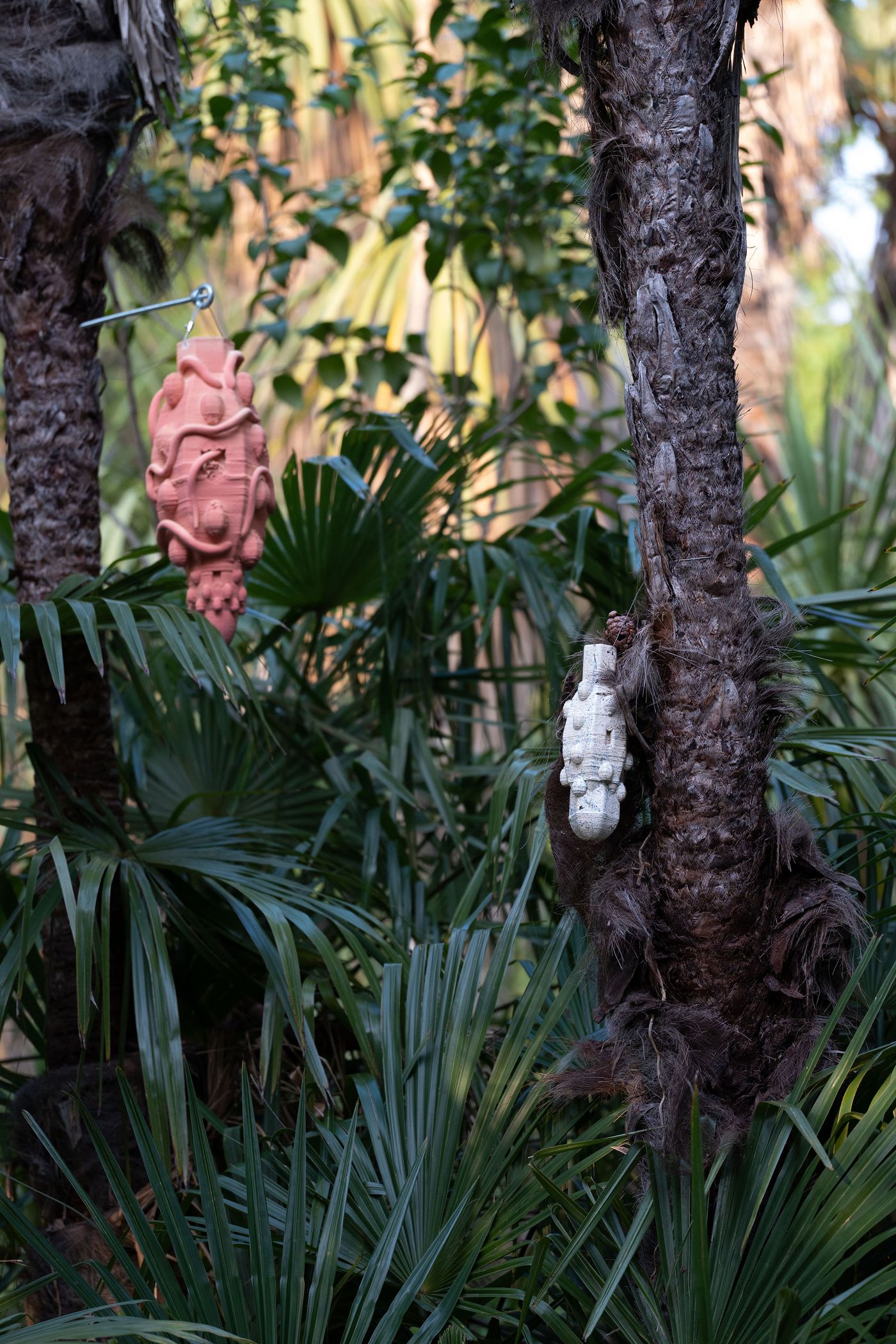
Nest series. Photography by Claudia Goletto.
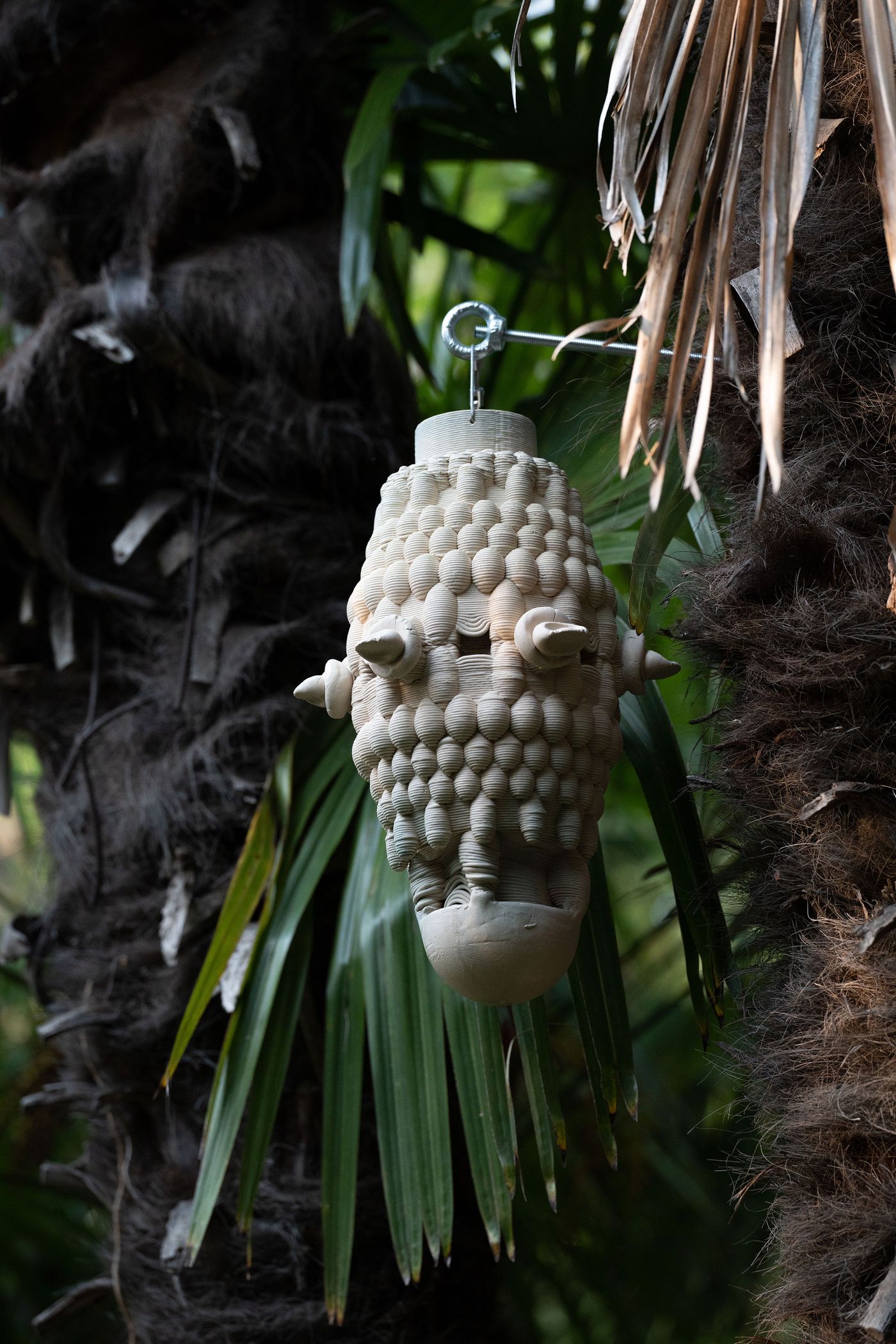
Nest #6, 2023. Stoneware, oxydes, organic materials, water, sugar. 35 x 22 x 22 cm. Photography by Claudia Goletto.
Where did your fascination with the natural world originate, and how has it shaped your evolution as an artist?
I grew up in a suburban neighbourhood on the outskirts of Paris, in a house situated at the edge of a forest and near vast housing complexes that had been built in the 1950s. The forest became a kind of refuge for me—a space of quiet resistance to an urban life that never truly resonated. As a teenager, I began to notice how urban planning confines nature into designated parcels: parks, woods, forests—all with clearly defined boundaries. I felt torn between a desire for cities to embrace a deeper symbiosis with the natural world and a concern for protecting non-human life from our often-destructive activity.
Two decades later, those early reflections continue to shape my artistic practice, particularly when it comes to interspecies collaborations. More broadly, the countless hours that I have spent observing natural environments and non-human beings have deeply influenced how I create. After all, how can one not be captivated by the different temporalities of living things? The gap between the fleeting existence of a gnat and the slow, deliberate growth of an oak tree is vast—yet both are intimately connected. My practice echoes this diversity in temporal rhythms: extended periods of quiet maturation are often followed by sudden bursts of emergence.
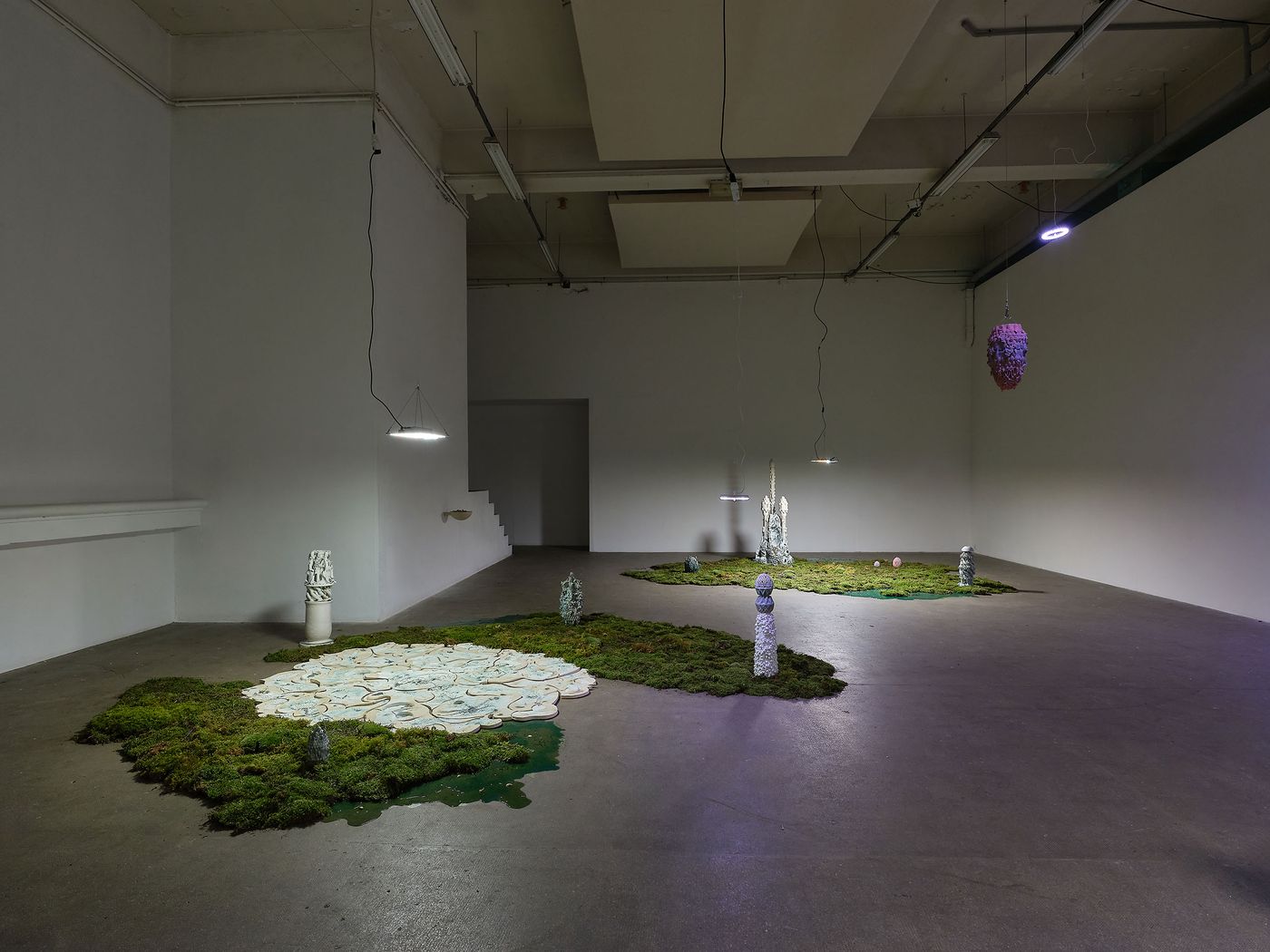
Exhibition view: Log’in a long night, Doc, Paris, 2024. Photography by Objets Pointus.
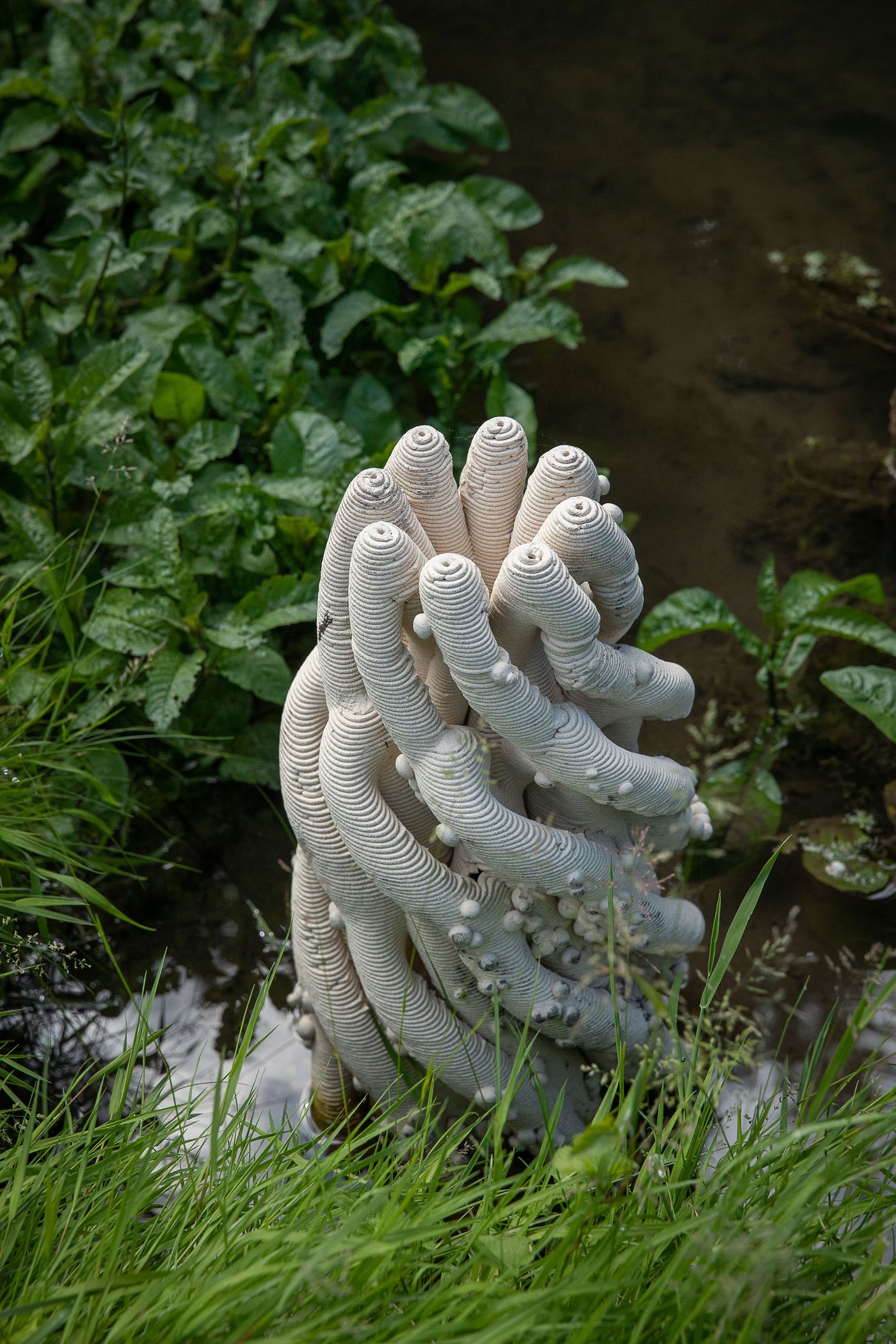
Photography © yannmonel.
Your work often explores the interplay between form and function. How do you balance creating an aesthetic appeal with practical utility in your ceramic pieces?
I believe I’m trying to extend what all living beings naturally produce: forms whose aesthetic richness are inseparable from their functional precision. There is no shortage of examples—the veining of a leaf, the hexagonal cells of a beehive, or the geometry of a spider’s web. One could spend a lifetime listing the astonishing relationships between form and function in what we call “nature.”
Using the resources available to me, my aim is to enter into that dynamic and contribute to it. This of course requires constant experimentation—not in pursuit of cold, rational efficiency, but in recognition that the agency of what I shape will ultimately be determined by an ecosystem beyond my control. I’m not interested in creating functional objects. Rather, my work is focused on making tools for observation and frameworks geared towards interspecies collaborations.

Untitled, 2024. Exhibition view: Log’in a long night, Doc, Paris, 2024. Photography by Objets Pointus.
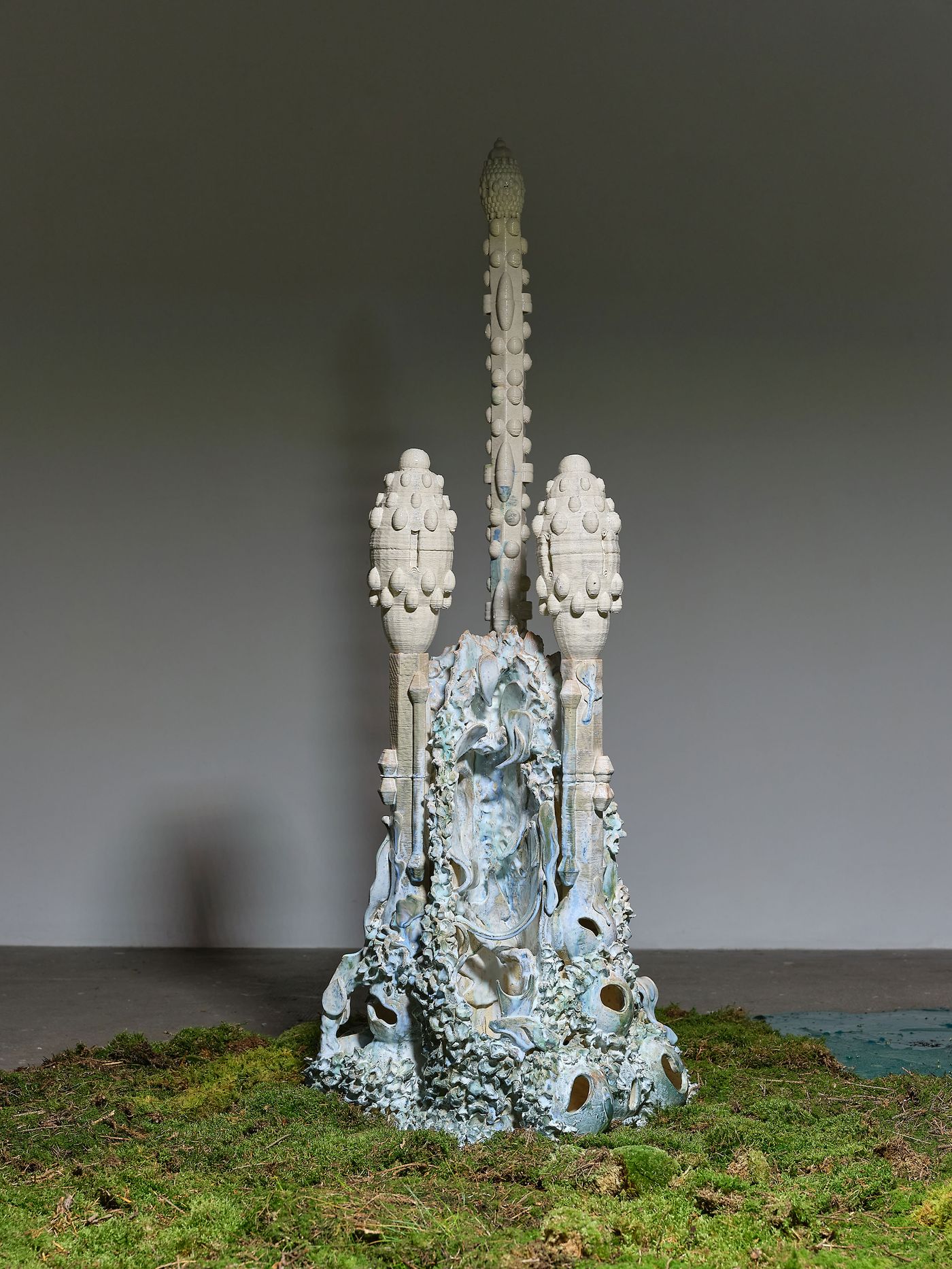
Untitled (Donjon), 2024, Glazed stoneware, 144 x 46 x 45 cm (5 parts). Exhibition view: Log’in a long night, Doc, Paris, 2024. Photography by Objets Pointus.
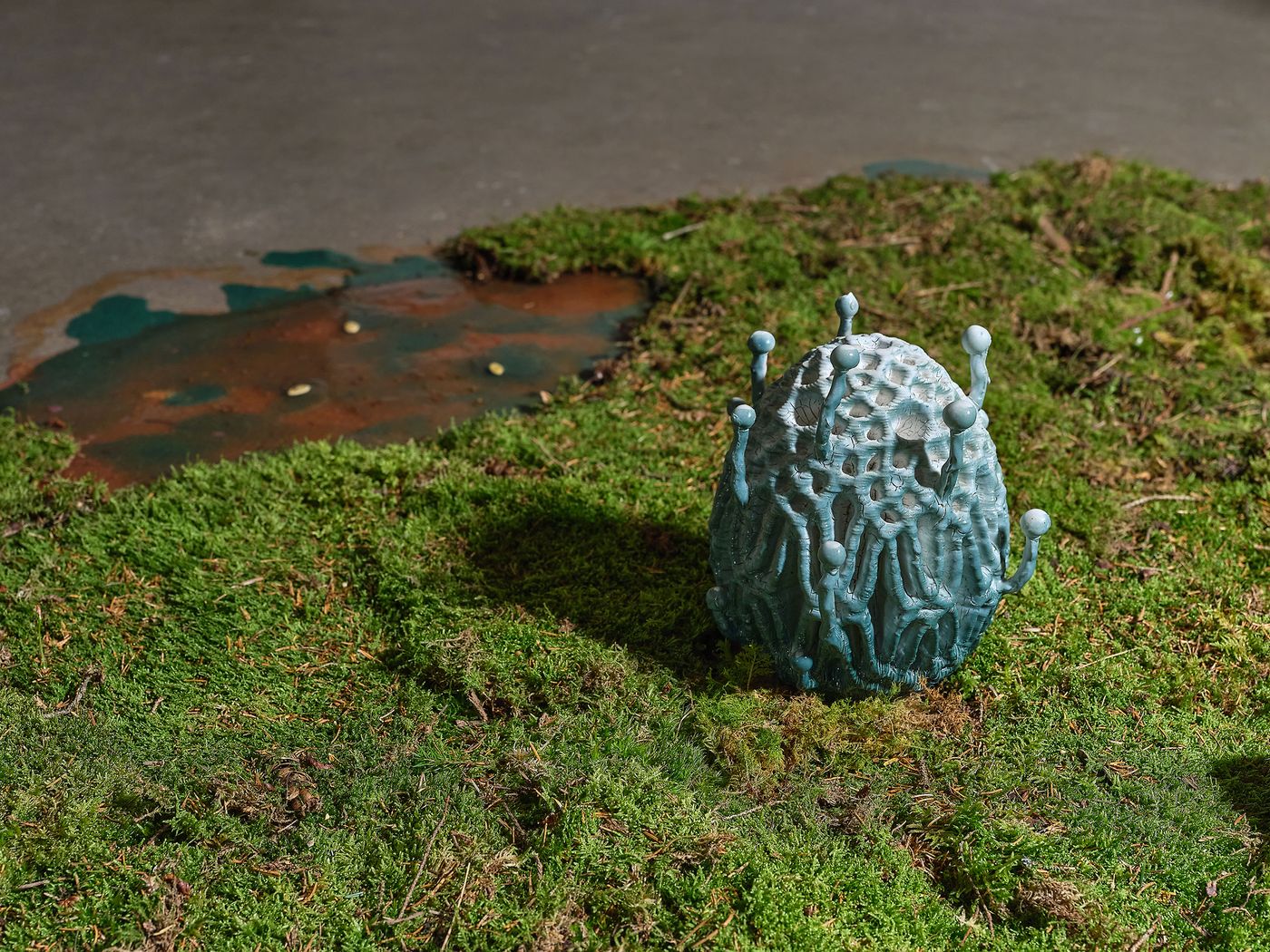
Studies #6, 2024. Exhibition view: Log’in a long night, Doc, Paris, 2024. Photography by Objets Pointus.
Walk us through your creative process, from initial concept through to a finished piece. Do you meticulously plan every detail, or do you leave room for spontaneity and discovery during the crafting phase?
After an initial phase of research and sketching, my process becomes highly intuitive, where decisions unfold organically as I work. Some pieces—particularly the Nest series and Entomological Utopias—are specifically designed to host insects within carefully considered biotopes. In these cases, I imagine their architectures as habitats conceived for particular species.
With that being said, there is no fixed blueprint. These works are intentionally modular and adaptable, they’re meant to be configured in various ways depending on the site and the experience that is being proposed. They function as laboratories—tools for exploring relationships with non-human life. They are never truly finished, because the goal isn’t to design objects, but to design relationships.
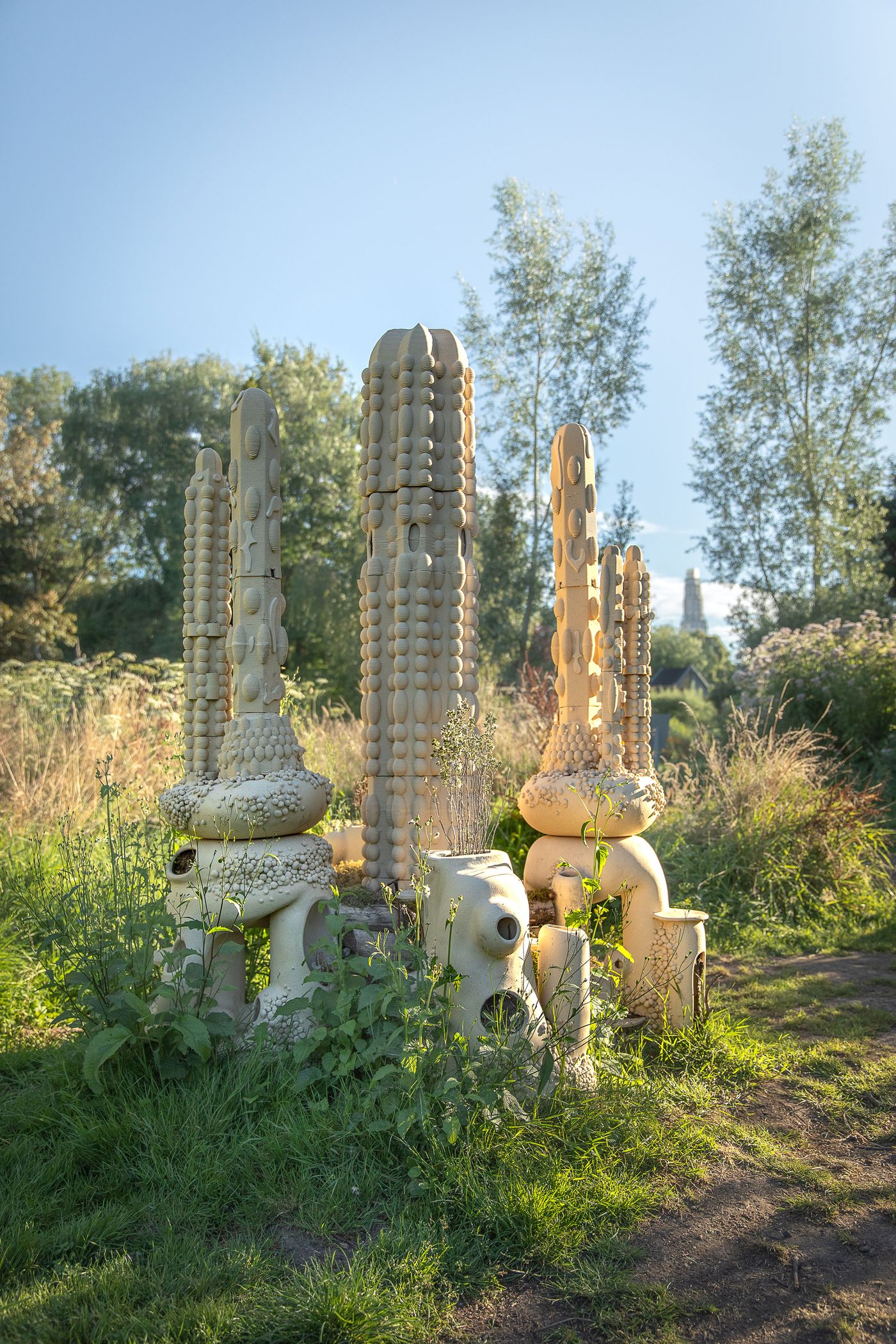
Utopies Entomologiques #2, 2024. Festival international d’art et de jardins, Les hortillonnages, Amiens, 2024 Photography © Yann Monel.
Your work ranges from intricate, biomorphic structures to more minimal yet equally evocative forms. What determines the level of complexity in each piece—does it stem from the concept, the material, or the making process itself?
I believe the predominant factor is the environment which the work will be installed in—especially when it is intended for outdoor settings. I’m currently developing a new piece from the Entomological Utopias series, which will be placed in a botanical garden overlooking Lake Annecy. I’ve made several visits to the site—during the autumn, winter, and spring. These periods of observation are integral to my practice and directly inform the forms that the work will take.
The experiences gathered from the first two Entomological Utopias also guide this new project, which is again conceived for arthropods. In the studio, I’m constantly exploring new forms, textures, colours, and methods. I also produce many works that will never be “activated” by living beings. These sculptures act as a reservoir of inspiration—a fertile ground for the continual renewal of my visual language. This richness of form is part of the creative freedom inherent to both the sculptor and the artisan. I place no restrictions on myself.
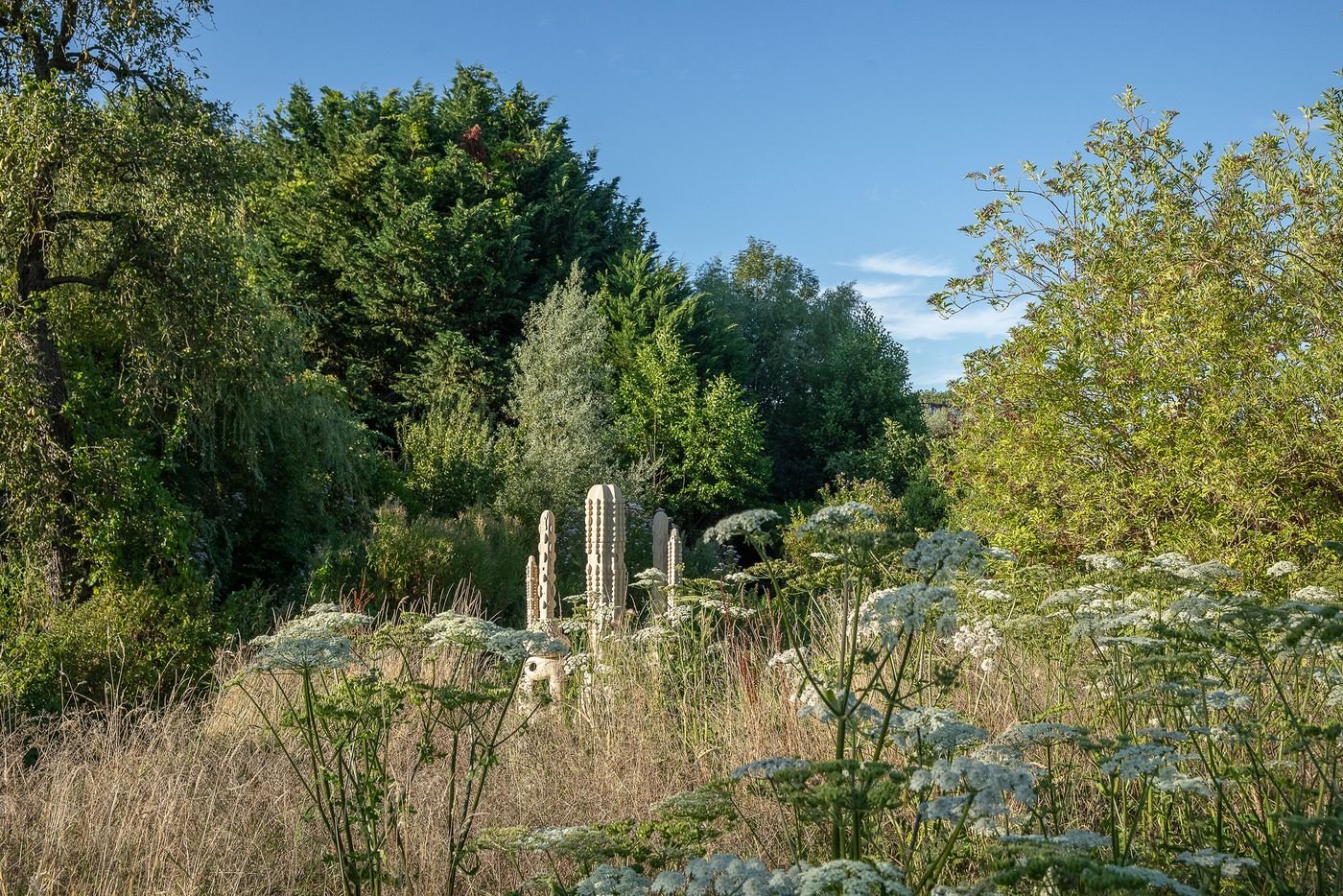
Utopies Entomologiques #2, 2024. Festival international d’art et de jardins, Les hortillonnages, Amiens, 2024 Photography © yannmonel.
Your work combines traditional ceramic techniques with 3D printing. What drew you to this hybrid approach, and how does the dialogue between handcraft and digital fabrication shape your creations?
It was the Entomological Utopias project that first led me to explore 3D printing. My early research was inspired by natural architectures such as hives and termite mounds. I saw in this technology a way in which to create intricate internal structures within my sculptures—with a level of precision suited to the scale of small arthropods.
I have no formal training in 3D modelling and very little prior experience, but today’s tools and the wealth of shared knowledge online have enabled me to reach specific goals quickly, without any need for deep specialization. My sources of inspiration range widely, from 19th-century botanical illustrations to contemporary electron microscope imagery. I compile this visual material using digital tools like 3D modelling software and, more recently, generative AI. I then test these designs through printing, often refining them manually afterwards, when necessary.
The process remains quite rudimentary and empirical—but that’s precisely what makes it accessible. I draw on a collective iconography, composed of familiar architectural and biological forms. Through the Entomological Sculptures, 3D printing has become integrated into my creative process. It’s now leading me toward other proposals that take advantage of this technique’s specific possibilities, while still being combined with more traditional craft methods.
Overall, I view new technologies not as a break from tradition, but as a natural extension of it.
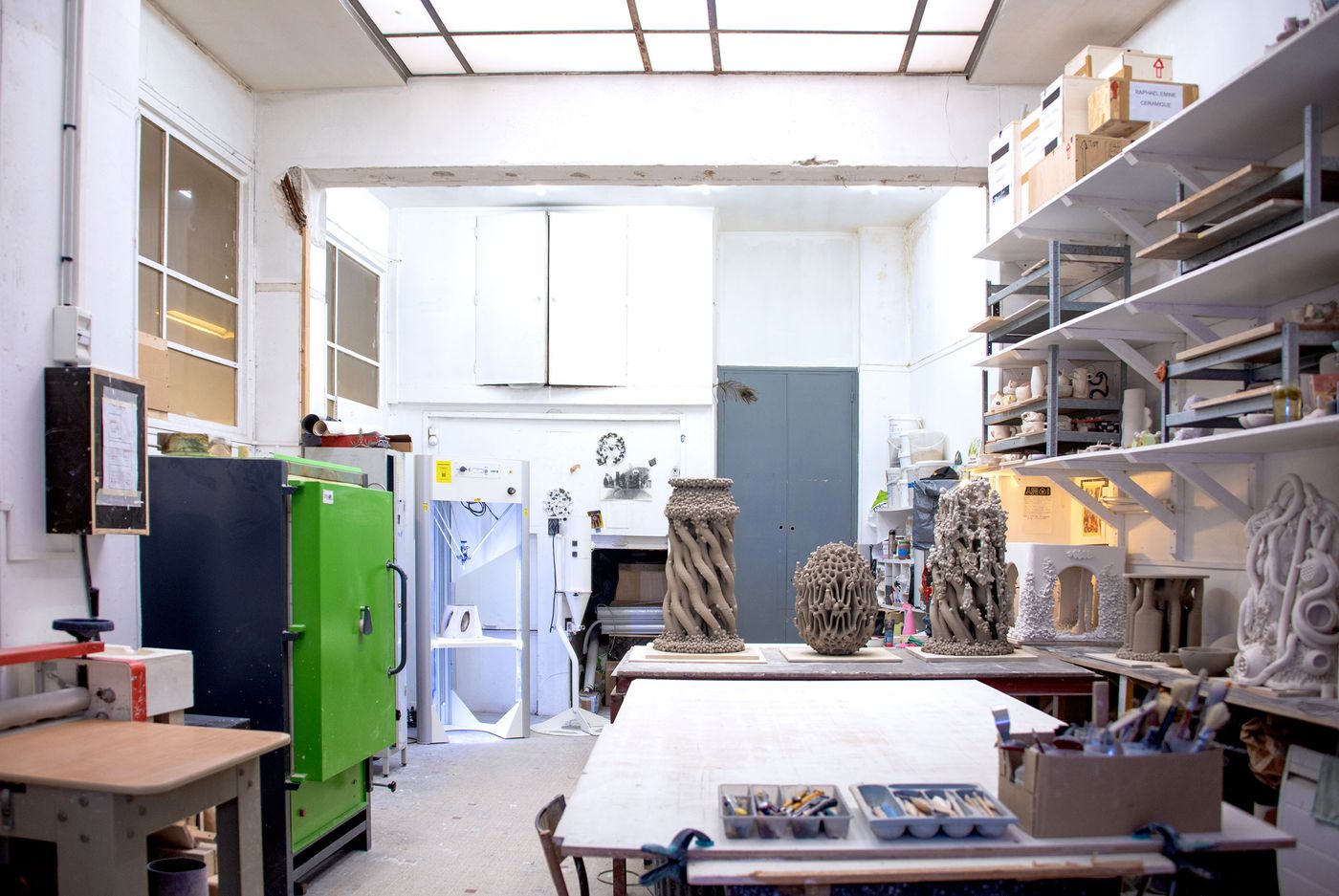
The artist's Studio in Paris. Photography by Raphael Emine.
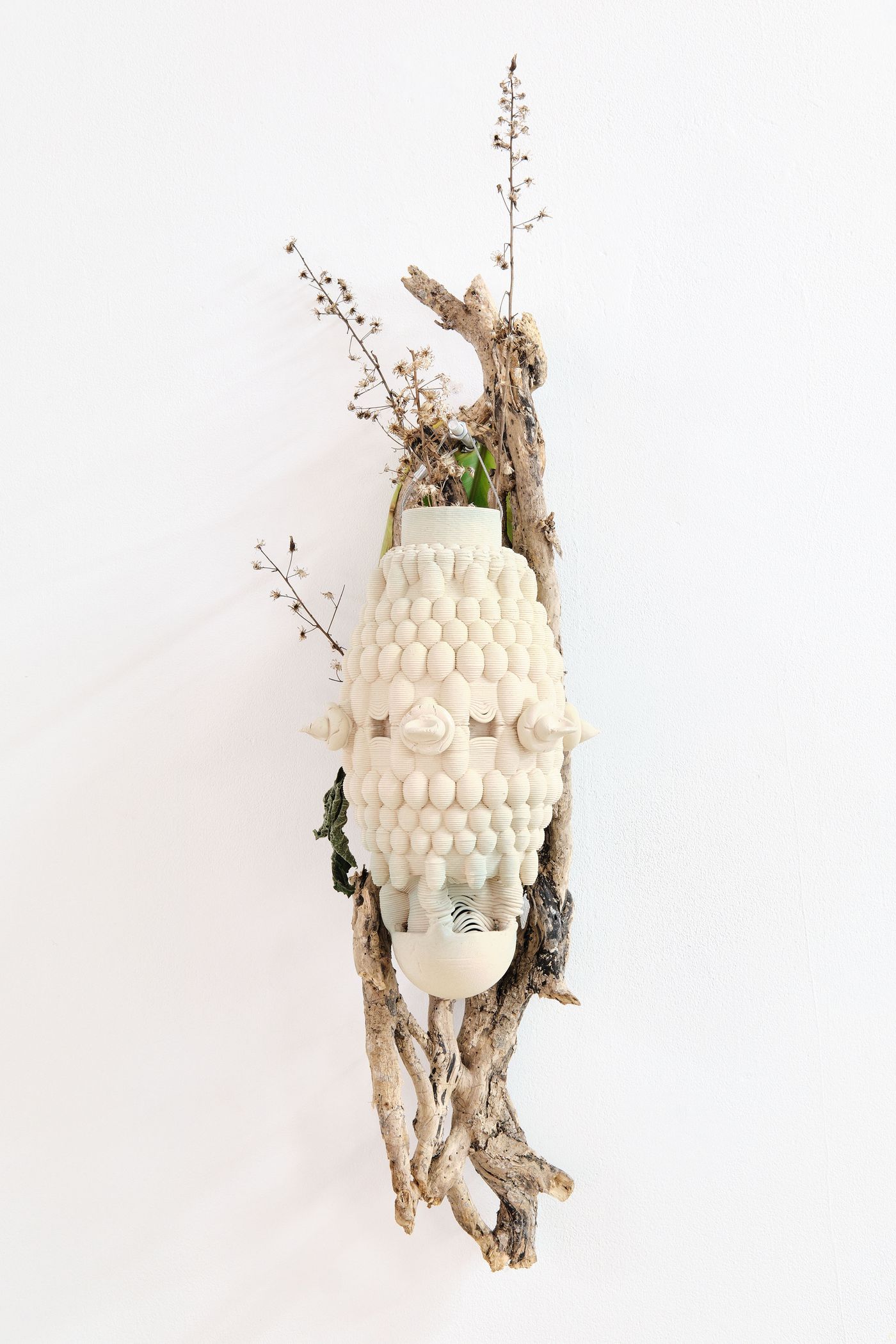
Nest #6, 2023. Glazed stoneware, organic materials. 35 x 22 x 22 cm. Exhibition view: Witch you were here, La Station, Nice, 2023. Photography by Luc Bertrand.
Your sculptures are often porous, inhabited by plants, or colonized by insects and bacteria. How do you navigate the tension between control and organic unpredictability in your making process?
Once the installations are in place, I no longer have any real control over the work. It gradually enters into conversation with its surrounding biotope, and this actually marks the most important phase: observation. My intention is to create collaborations with non-human beings, so I allow them to appropriate the works in their own way, observing the interactions between the material, the sculptural forms, and the environment.
That being said, I do sometimes intervene by nourishing the internal parts of certain sculptures with new organic matter depending on the season and the dynamics unfolding in the environment where the piece is installed.
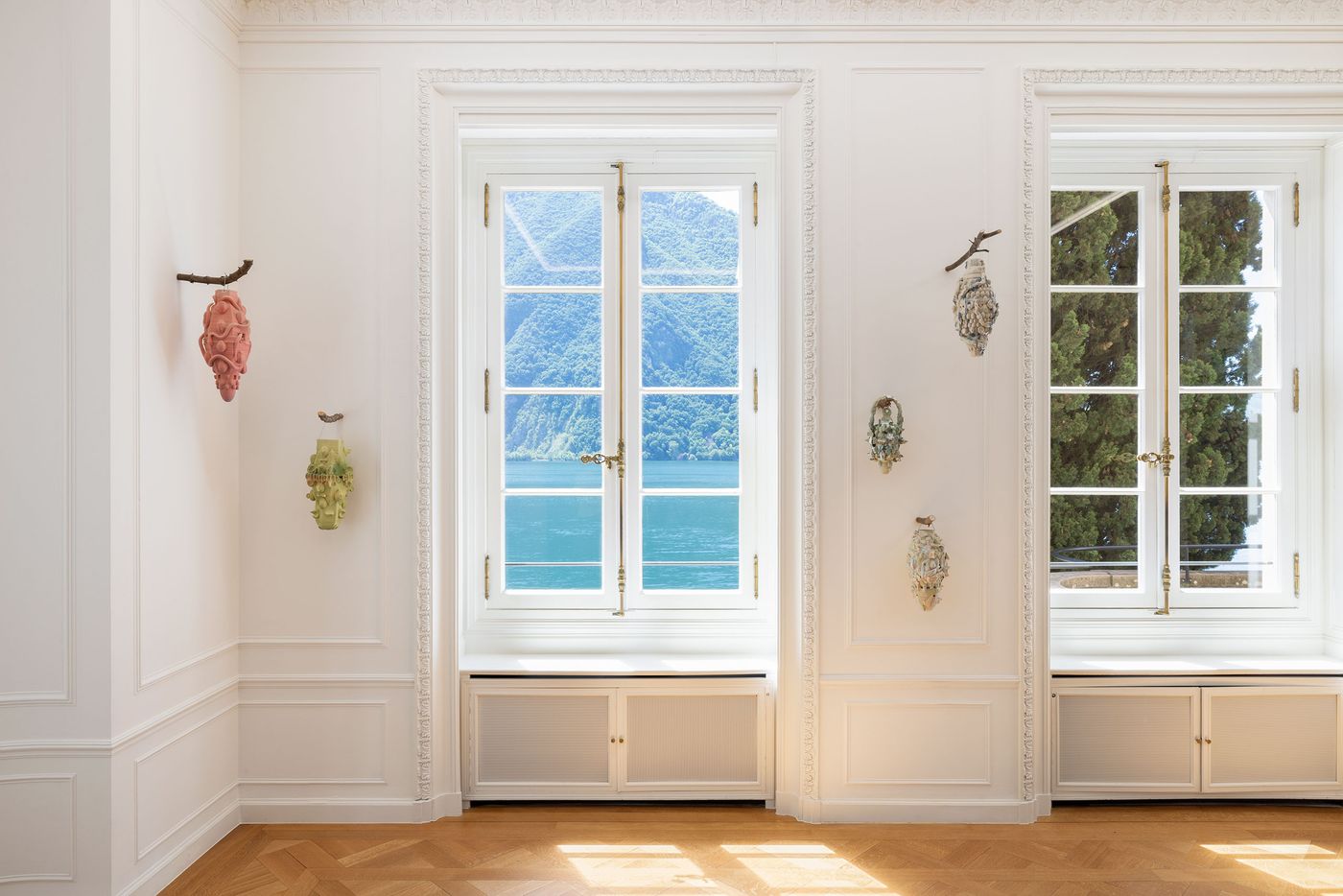
(Left to the right) Nest #3, Nest #7, Nest #4, Nest #2, Nest #1, 2024. Exhibition view: ARCADIA, Bally Foundation, Lugano, 2014. Photography by Andrea Rossetti.
Les Utopies Entomologiques (Entomological Utopias) are designed as permanent outdoor installations, intended to evolve over time as habitats for plants and insects. How have they fared in their environments? Have you observed unexpected interactions, and how do you keep track of their transformation?
I regularly observe the evolution of an Entomological Utopia installed in my studio’s garden, located in a densely urbanized area of Paris. This wild garden has become the laboratory for my research. It consists of several tons of soil placed directly onto a concrete slab—like a large open-air Petri dish. I intervene very little, allowing endemic plants carried in by the wind, insects, or birds to take root. My role is simply to make space, ensuring that each species can develop freely.
Within this context, it’s easy to observe how the sculpture interacts with non-human life. These observations inform my conclusions and significantly influence new works destined for outdoor environments. At the same time, I remain aware that each ecosystem responds differently to the work, and therefore avoid applying any fixed principles or systematic approaches.
I regularly document the evolution of the garden and the sculptures within it, building a body of material for a future publication that will reflect and share these ongoing experiments.
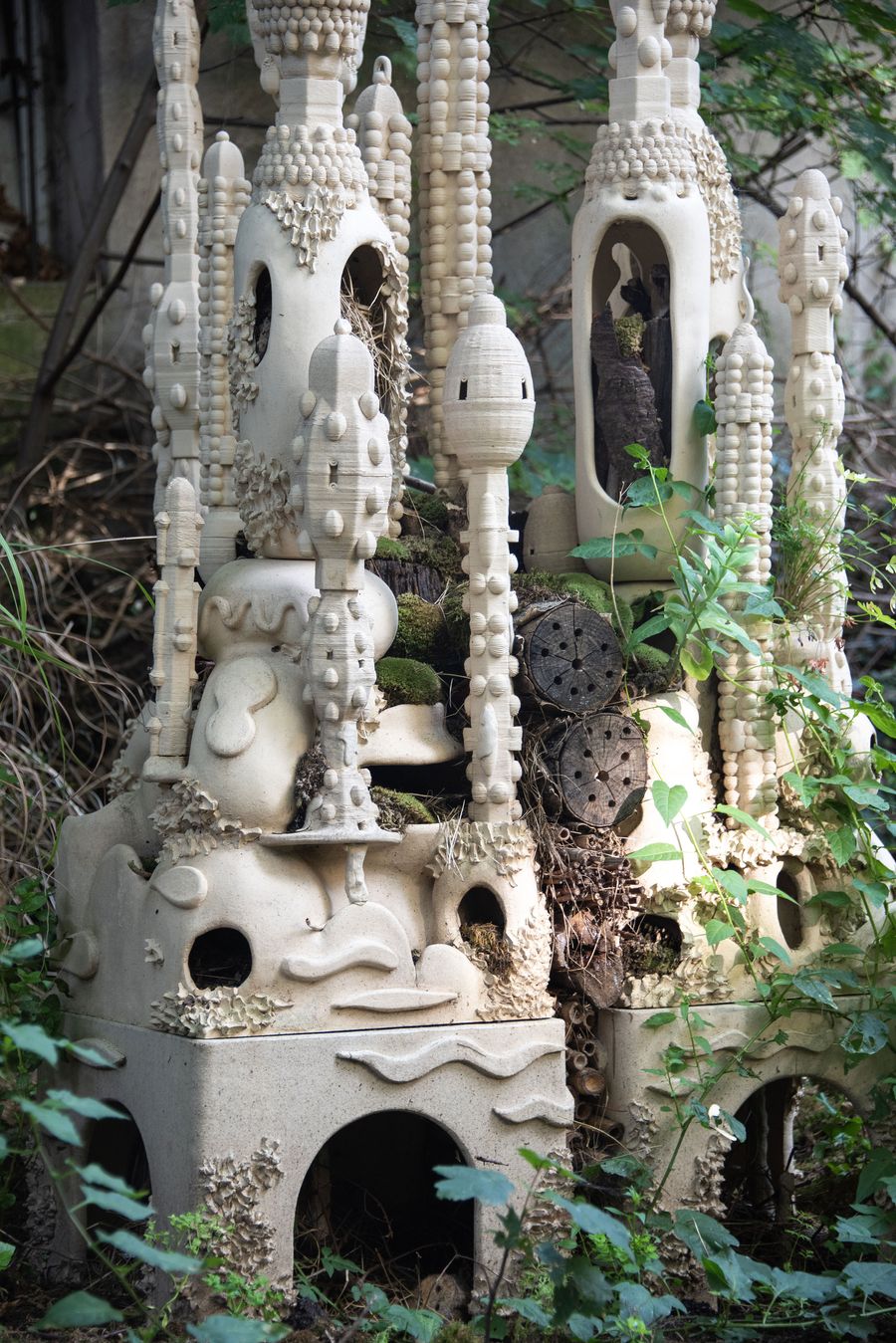
Utopies Entomologiques #1, 2023-2024. Permanent installation in the garden at Doc, Paris 19e, 2024. Photography by Jerome Valton.
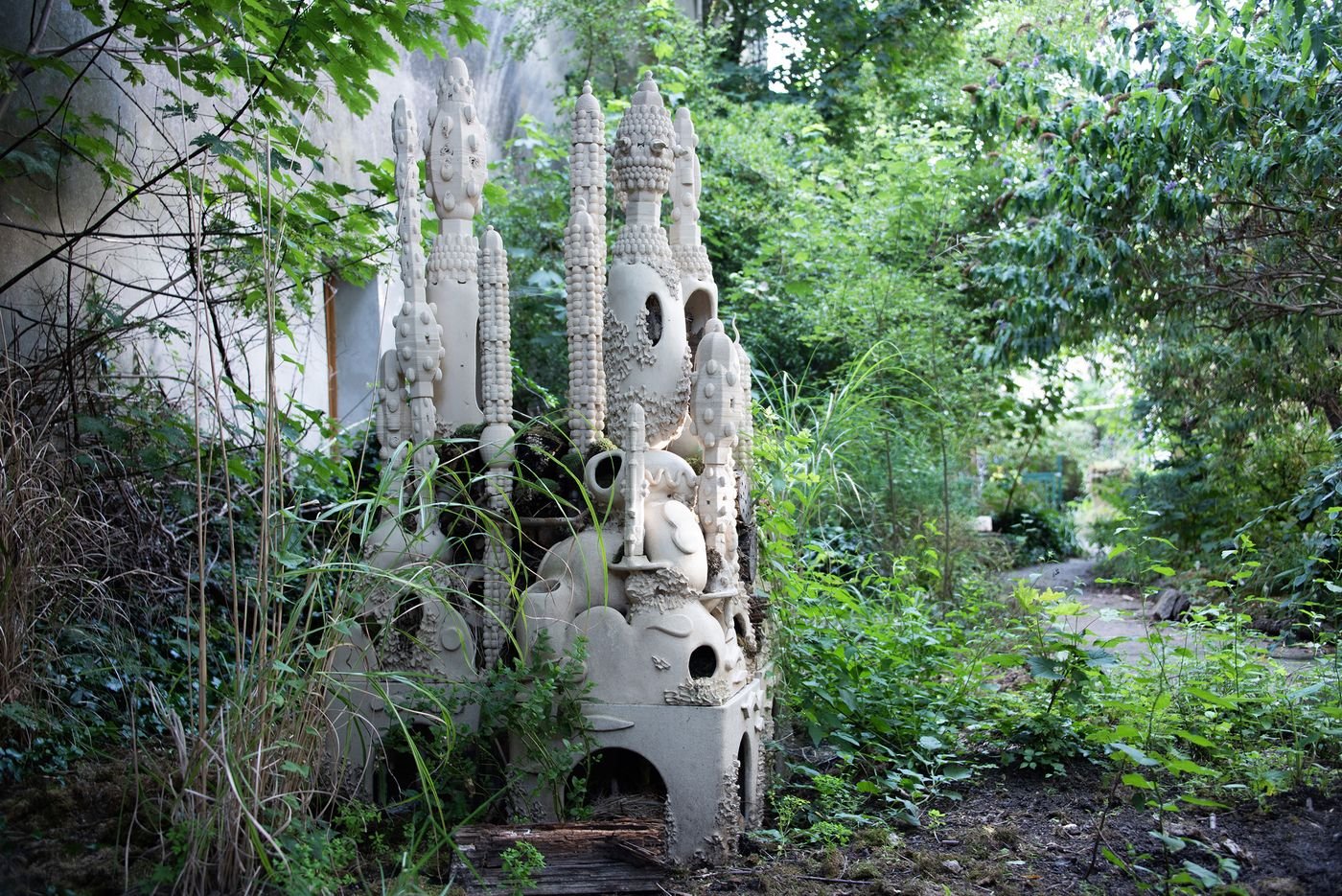
Utopies Entomologiques #1, 2023. Photography by Jerome Valton.

Utopies Entomologiques #1, 2023-2024. Permanent installation in the garden at Doc, Paris 19e, 2024. Photography by Jerome Valton.
The concept of 'dwelling' is central to British anthropologist Tim Ingold's writings, suggesting a continuous engagement with one's surroundings. How does this idea manifest in your studio practice and the environments you create for your work?
Tim Ingold is one of the thinkers who has most deeply influenced my work. His concept of dwelling is grounded in the idea that beings—both human and non-human—are not passive spectators of their environment, but are actively engaged with it through their everyday activities. For Ingold, to dwell in the world means to be immersed in a constant flow of experiences, interactions, and transformations, a perspective that permeates both my artistic practice and my daily life.
My studio is located in a tiers lieu (“third place”)—a formerly abandoned building that my collective of artists and artisans has reclaimed after 20 years of disuse. Here, we’ve had the opportunity to experiment with self-management and horizontal forms of governance—political experiences that have profoundly shaped my understanding of creation.
I aspire to help build a world that can contain many worlds—not by forcing difference to conform to a whole, but by weaving the whole from difference itself. This approach leads me to consider my environment and all its inhabitants—human and non-human—with respect and attention. I believe that by observing non-human beings—how they create and sustain their own worlds—we might begin to reimagine the ways in which we inhabit, or co-inhabit, ours.
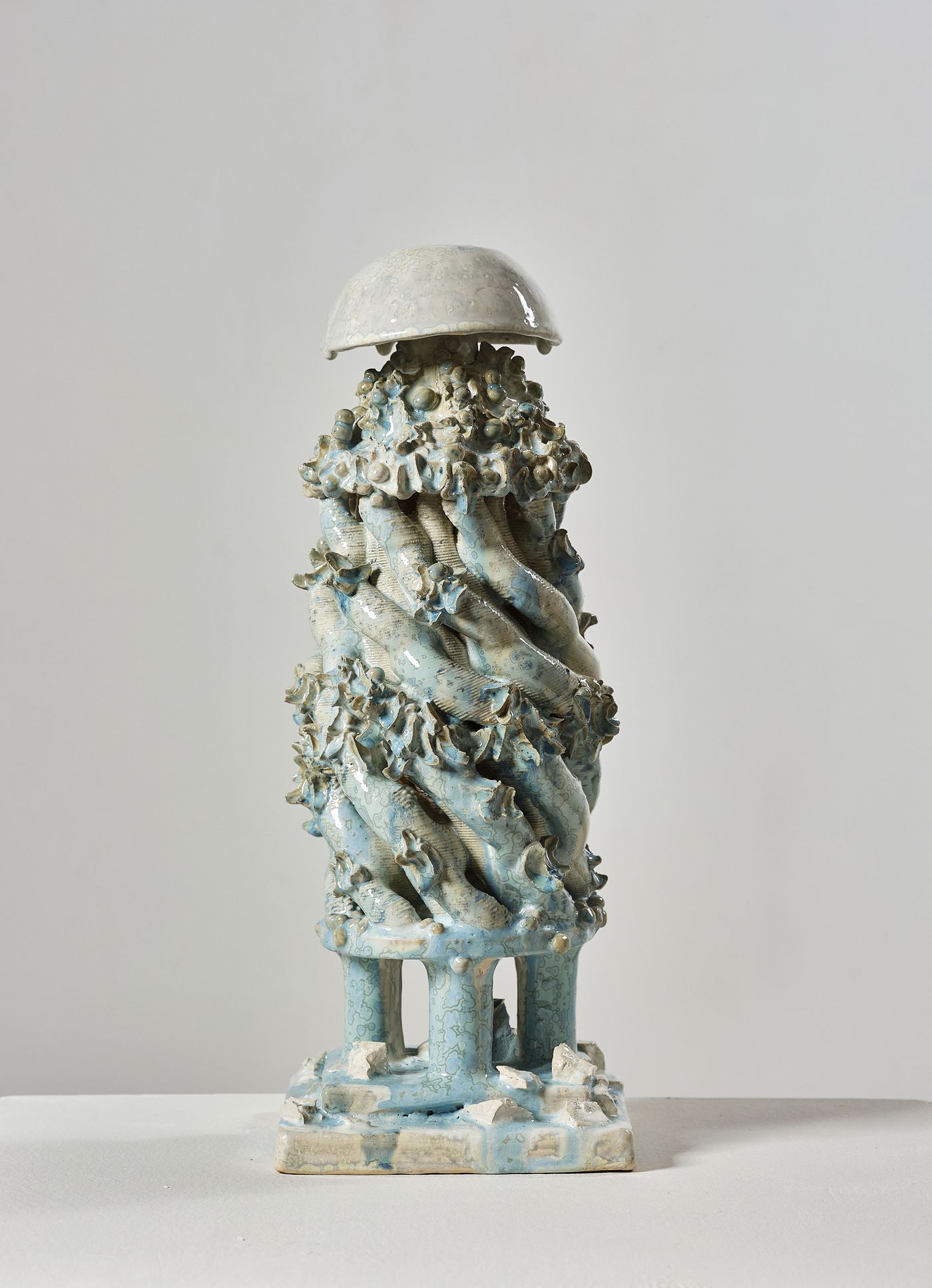
Studies #1, 2024. Glazed stoneware. 42 x 17 x 17 cm. Photography by Objets Pointus.
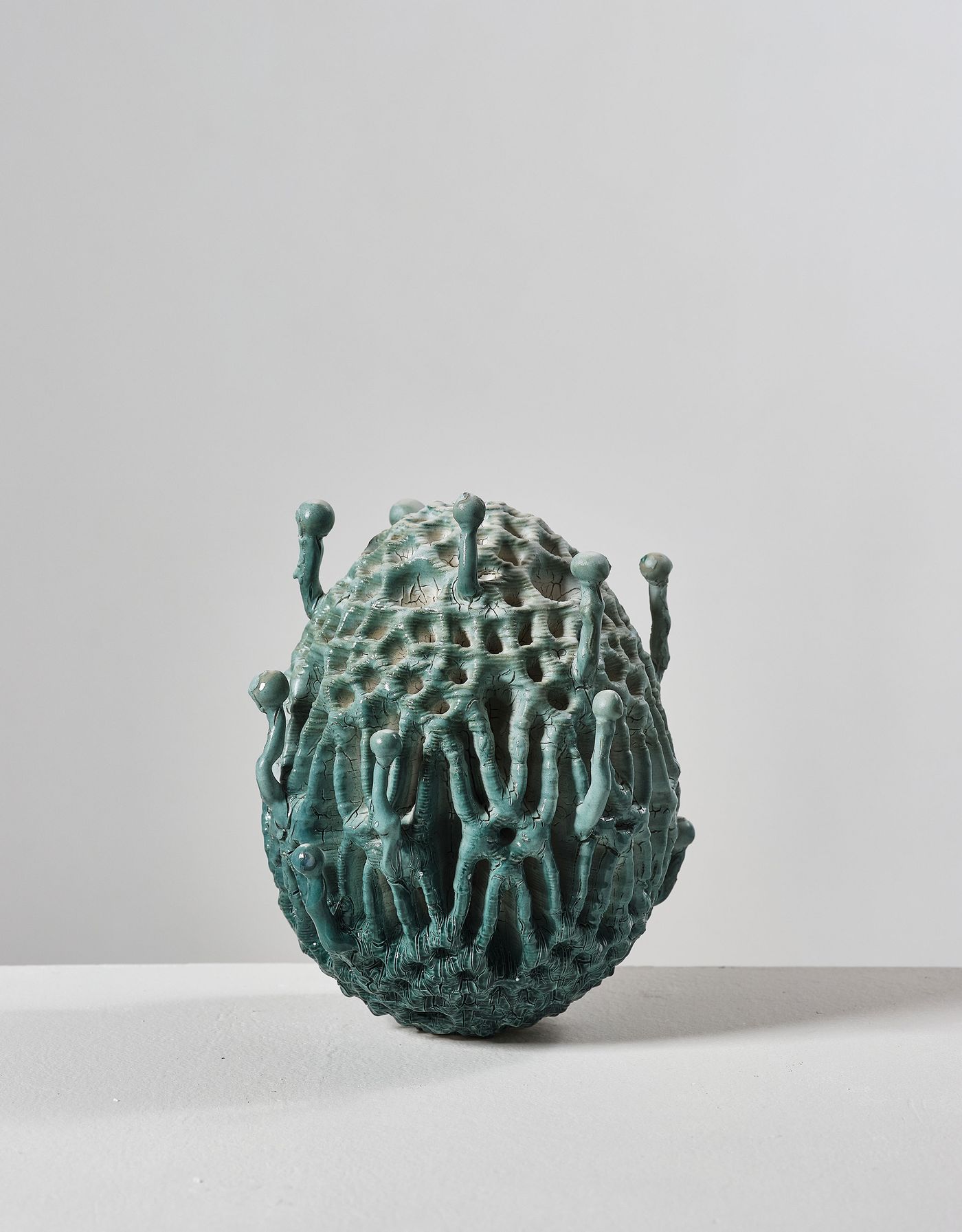
Studies #6, 2024. Photography by Objets Pointus.
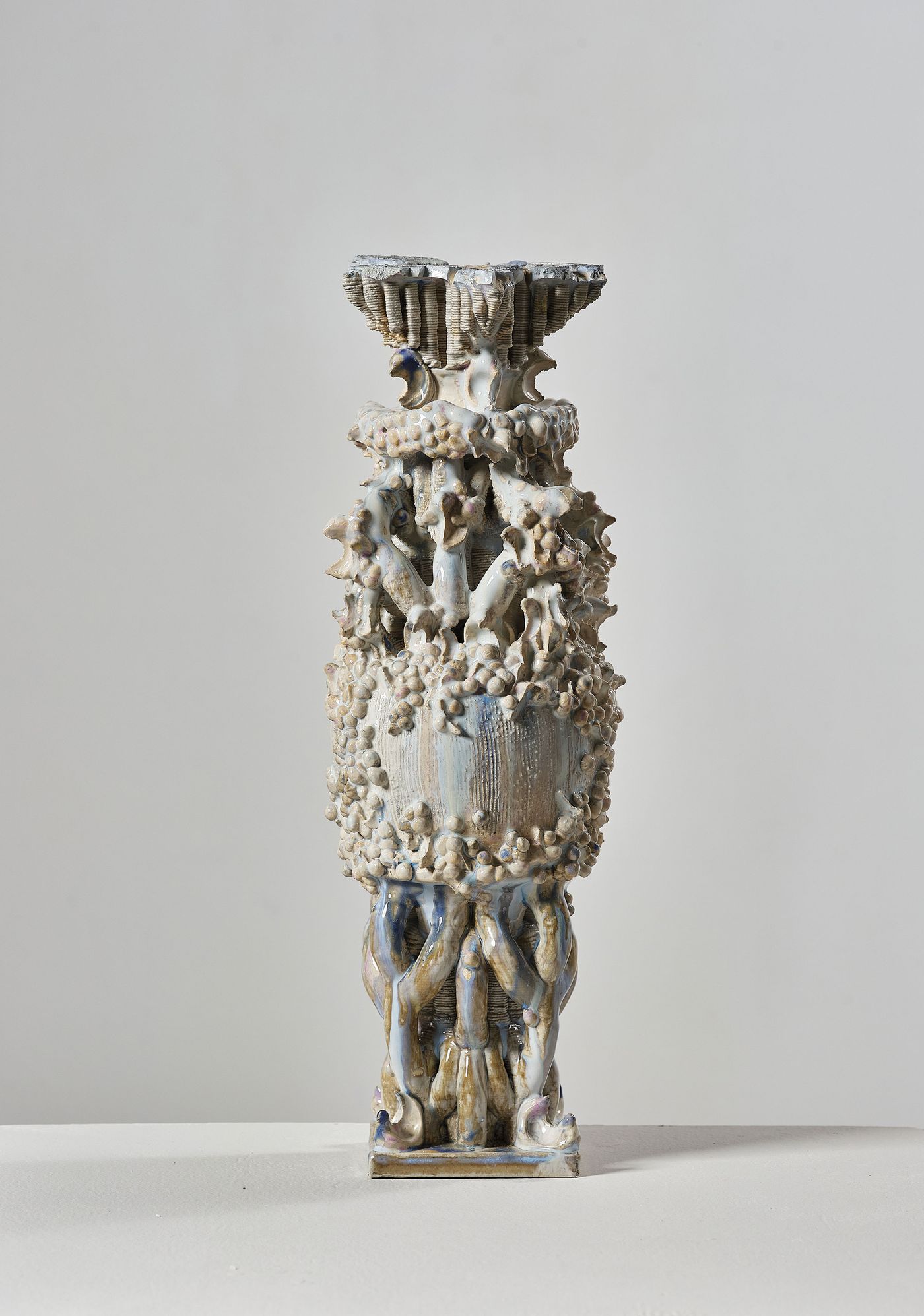
Studies #2, 2024. Glazed stoneware. 45 x 15 x 15 cm. Photography by Objets Pointus.
Your work engages deeply with biological forms, entomology, and environmental systems. Do you see yourself more as an artist, a researcher, or something in between?
I see my role as that of a mediator—much like many artists and researchers who came before me.
What projects are you currently working on, and are there any upcoming exhibitions or installations where we can see your latest work?
Currently, I’m working on a new Entomological Utopia that will be installed in the gardens of the Château de Menthon Saint Bernard which will open on June 6th. This is a permanent installation and an exciting collaboration with the commissioning body and the château’s gardeners.
This spring, you can see my work exhibited in Paris at Galerie Poggi until April 26th, and at Galerie Idéale starting May 15th. My work will also be presented as part of two public commissions this summer in the courtyard of Musée Pincé in Angers for the Échappées d'art 2025 exhibition. Several Nest pieces will also be installed in the heart of the Domain Départemental de la Vallée-aux-loups in Châtenay-Malabry during the Jardins Ouverts summer event.
I am also participating in the upcoming Saint-Étienne Design Biennale and preparing for a solo exhibition at the Centre d' art Madeleine-Lambert in Vénissieux.
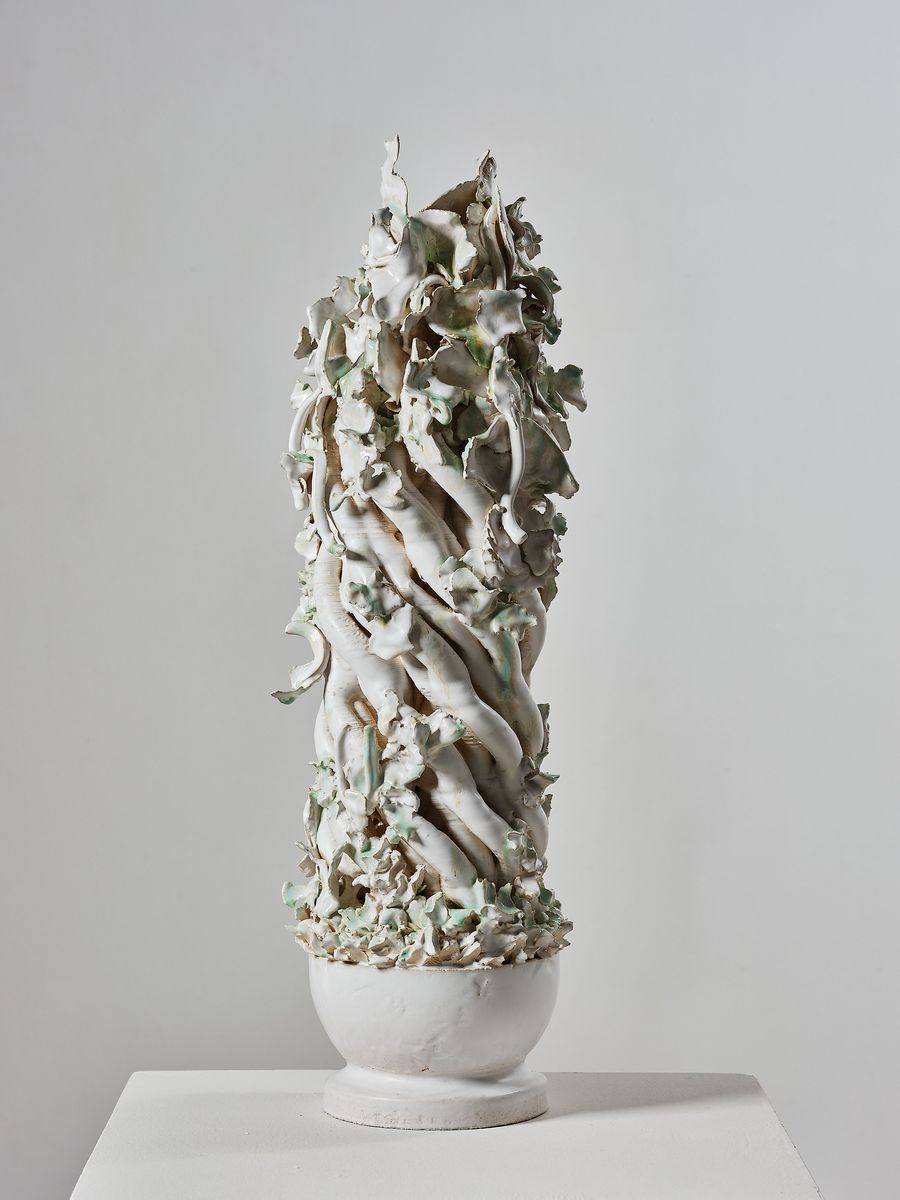
Photography by Objets Pointus.
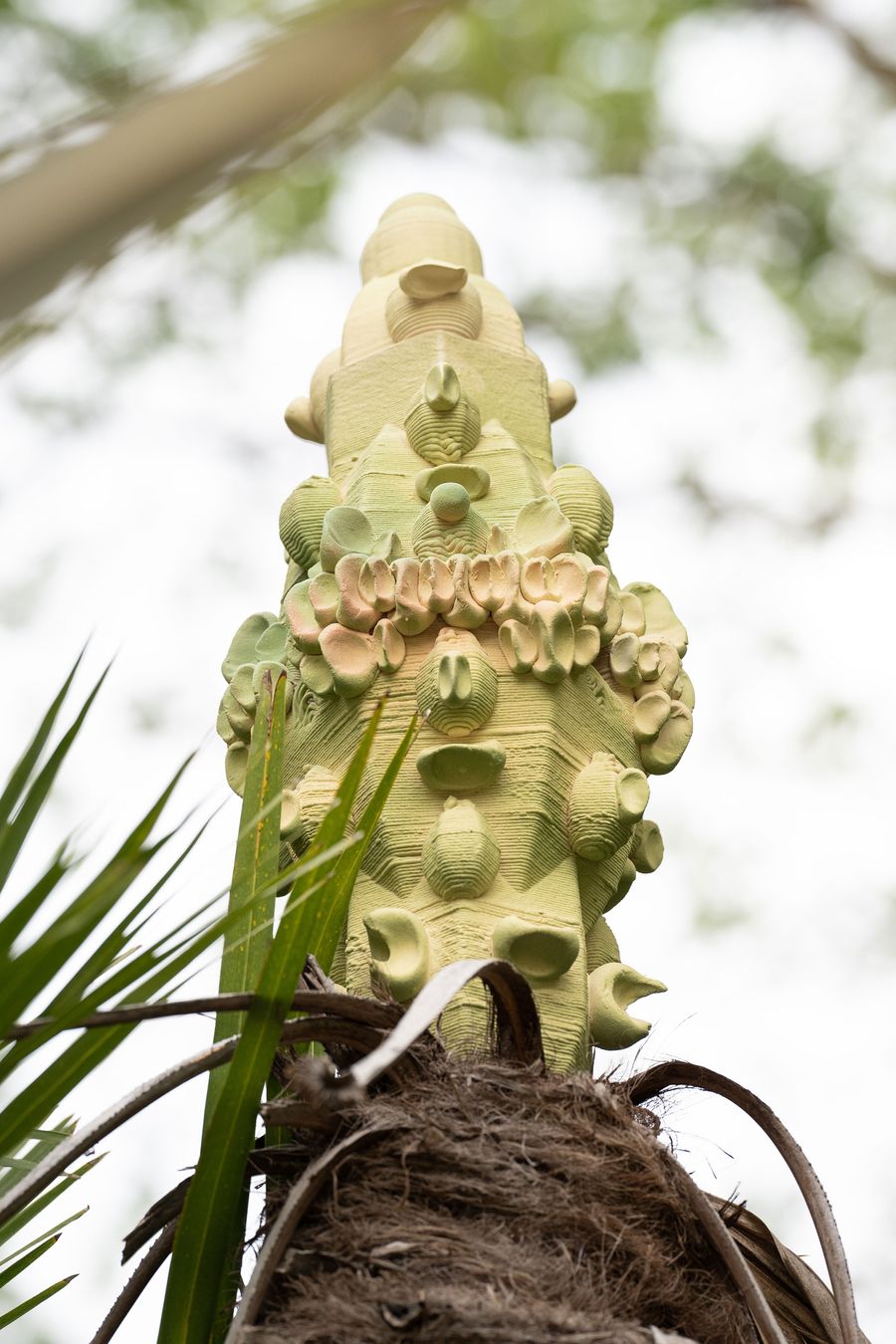
Nest #7, 2023. Installation view: Arts Éphémères at Parc Maison Blanche, Marseille, 2023. Photography by Claudia Goletto.
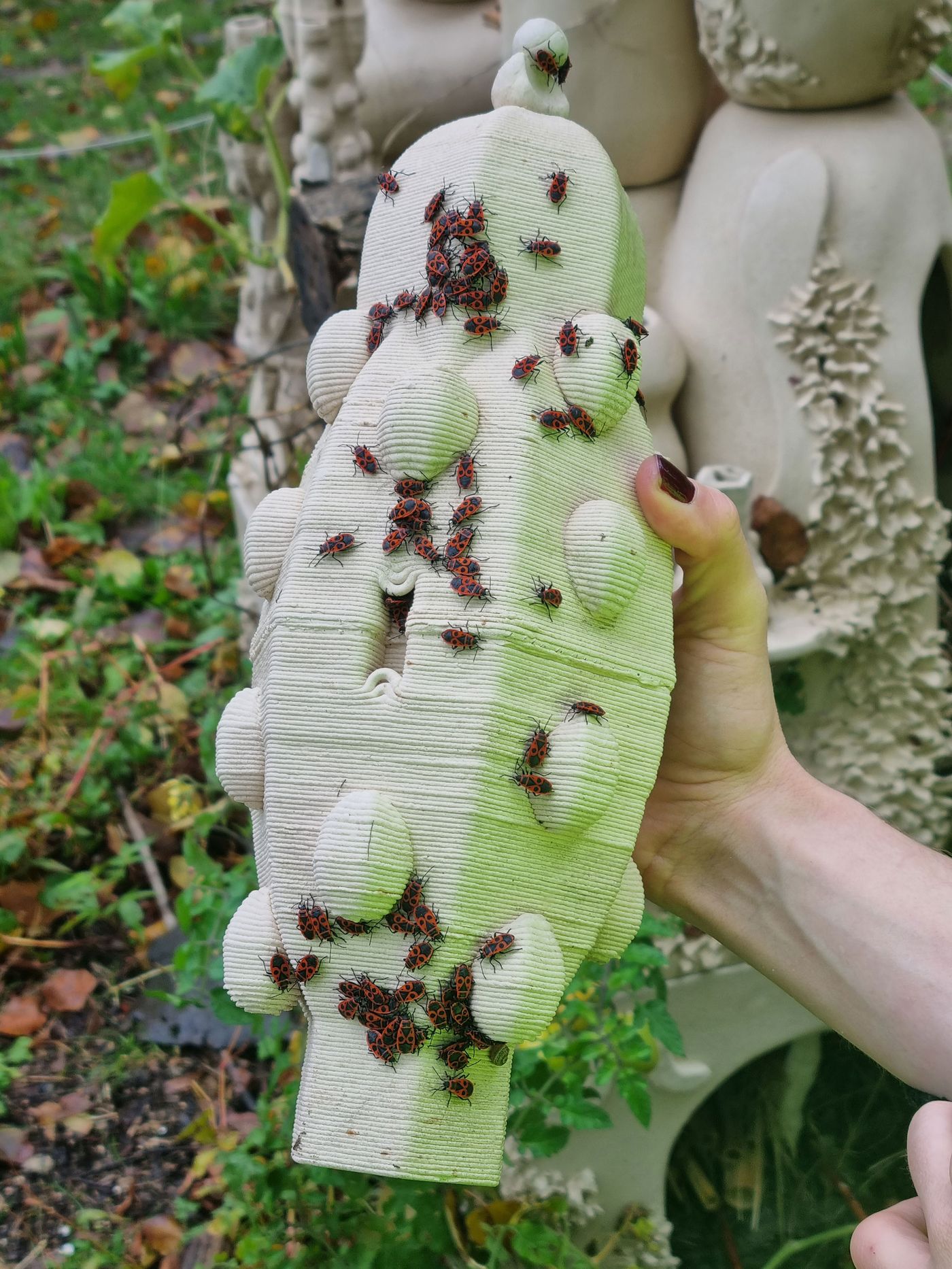
Utopies Entomologiques #1, 2023. 6th edition of the festival Jardins du monde en mouvement, Cité Internationale Universitaire, Paris, 2023. Photography by Objets Pointus.
